an opinion essay by bill berry, jr.
To put what I am sharing in its proper perspective, if you do not know about; are not from, or even if you live in Auburn, New York, here are a few basics. {Of course, our local tourism board can provide a more in-depth analysis.} https://www.tourcayuga.com/
Auburn is a small and only city in predominately rural and basically agricultural Cayuga County. This upstate New York State city is sited within the Finger Lakes region and is noted for its legacy of being “home” to American heroes Harriet Tubman and William H. Seward. The city’s population of 27,687 residents is 86% white, 8% Black, 3% Hispanic, 3% bi-racial, and less than 1% Asian and Native American. The County’s population is similar with a population of 76,576 neighbors. Whites account for 92%, Blacks 4.4%, Hispanics 3.1% Bi-racial 2.3%, Asians .07% and Native American .05%. These demographics may help frame and put into perspective what a small city and upstate county can achieve to start to address issues involving the 21st century dynamics of law enforcement while being cognizant of the simple fact that no community’s thinking is homogeneous or purposely single-minded.
It is not necessary to re-iterate all the societal complexities that are faced as local communities, regional areas, and the nation grapple with current events and historical realities steeped in American racism and inequality. George Floyd, Breonna Taylor, Jacob Blake, BLM, armed militias, neighbors existing in their tribe solely based on deeply-seeded politics, race, and culture. Society is beginning to better comprehend that opportunities for success and family wealth have been for some and not others. The ladder of equity has been hampered by a legal system that renders a distinct brand of law to a majority group and has been totally oblivious to the unequal, unfair and often times brutal treatment of others permeated by law enforcement and the judicial system. The result continues to be the planned subjugation of an essential working class that all too often are people of color. And then, whether it is covert or overt, there is what is becoming increasingly routine, senseless killing of, or unprovoked assault on Black men, women, other peaceful white protestors. The harrowing mental impact of subjecting young African American children to the same vicious assault placed on their parents has shocked the nation and is indicative of a callous disregard for protecting the safety of Black children. (And note, the police’s use of less lethal weaponry, without appropriate training, since 1990 has led to over 300 people becoming disabled with at least 50 deaths according to the journal, BMJ Open, a “peer-reviewed open access medical journal that was established in 2011.”)
Black lives are now measured in minutes, seconds, the number of bullet holes, body bags and caskets and no longer predicated on life insurance actuarial tables. The bended knee once seen as disrespect for the flag, military service and a signal of “how dare they” black arrogance fueled by the blatant ignorance of elected national leaders is now a global multi-racial symbol of courage, peaceful resistance, and willingness to do the work for planned and systemic social justice change.
Now, it may be common-sense to appropriately cast dispersion on those rogue police officers who are sworn to serve and protect yet they miserably fail to do that basic exercise for people of color. There are significant numbers of American and global citizens who are beginning to better understand the proposition that not everyone is served or protected equally under the law. Unfortunately, the majority of “those in blue” are cast as agents of forced containment and keeping certain people in their generational place as being “less than.” However, the majority of law enforcement officers are decent individuals who want those things in life that are guaranteed for all by the U.S. Constitution. They have been stigmatized and cloaked in nefarious actions by reprehensible uniformed police criminals who remain protected by the “blue wall of silence,” wily defense attorneys, unyielding unions that have only one consistent, never changing message, reluctant and tardy prosecutors, and juries that do not adequately represent the diverse fabric of who we really look like as a unified people belonging to one nation.
Auburn/Cayuga, like other communities, is influenced emotionally and in its collective and individual mindset by national events. More notably, as a local community, we continue to strive to better manifest the community we aspire to be, inclusive and equitable. Truth be told, we are not there; yet, planned change is not an instant mix of ingredients for immediate gratification. It is hard work that must be consistent and unrelenting.
A few years ago, the Harriet Tubman Center for Justice and Peace (HTCJP,) which was organized in 1996 to address social justice issues in all its various stages in the Auburn/Cayuga community, started to work proactively with the Auburn Police Department (APD,) the Cayuga County Sheriff’s Office (CCSO) and Auburn Fire Department under the leadership of Chief Shawn Butler, Sheriff Brian Schenck and Fire Chief Joseph Morabito, respectively. The long-range goal was to develop strategic plans to diversify the employment ranks of those agencies, as well as to build a better relationship between law enforcement, uniformed services and the community. With a focus on people of color, as well as other residents who were not represented in policing ranks and often on the receiving end of a different level of public safety engagement, an increased number of applicants were platformed on enhanced applicant diversity in 2019. (Interestingly, the son (Jack Hardy) of Auburn’s first Black fireman is now the leader of the City of Auburn Civil Service Commission.)
Partnering with the City’s Civil Service Commission and in collaboration with the Auburn/Cayuga branch of the NAACP and the City of Auburn’s Human Rights Commission (HRC,) a long range, measurable strategic and assessment oriented plan was developed to position the community, law enforcement and uniform services as one community with shared values, respect and the willingness to be partners at a time where many communities were becoming or continuing to be disjointed. This Auburn effort was initiated in a national limelight when efforts to tear down separateness and obstacles between residents and officers sworn to protect and serve were locked in a Sisyphusian dilemma.
The Auburn approach was simple in its goal but complex and arduous in its execution.
Build community where different opinions could be heard, valued, and respected; where everyone recognizes that compromise is a stance to achieve in order to reach an agreed upon end game of true partnership and cooperation. To embrace a person beyond the artificiality of a uniform, job title, or social standing in the community. To see a person beyond the perceived confines of race, class, culture, ethnicity, or sexual orientation. To value and empower the unique features that make each person who s/he is. To cease, whenever possible, pre-determining a person’s worth. To tackle the difficult task of appreciating commonalities, shared goals, common dreams of living a life worth living, of preparing a better future for one’s children and grands.
“Connecting Bridges,” a 2019 collaborative initiative between social justice agencies spearheaded by the HTCJP, city and county law enforcement, propelled leaders to sit down, listen to and engage community residents in frank discussions that were sometimes difficult. While community attendance at these three forums were low, there was the shared realization that change cannot be manifested without sowing the seeds for such change. And often that is a learning process, an objective cemented in trial and error… Missteps became needed learning lessons. Adaptation and evolution were critical to keep one’s eyes on the end goal.
Operational changes were made in how the community bridges would continue in 2020. With a focus on audience specific forums that would pinpoint residents in housing complexes, students in educational institutions, and the membership of other organizations, HTCJP and uniformed services recognized that “captivated” audiences were better suited to the investment of social justice time instead of the open to all public forums that kicked started the initiative.
And then Covid-19 reared its nefarious shadow; hidden; invisible; deadly, and still relentless in its pursuit of rampant world-wide sickness and untimely death.
The “connecting bridges” concept had to adapt, to mutate towards another route that could serve the community during the restrictions developed to combat “19.”
The resultant thinking centered around presenting statistical and current data, as well as protocols and policies that govern law enforcement by each policing agency in a transparent and informative manner. The rationale was driven by the community’s need to better understand what law enforcement did and how. With this approach, community folks could better define and articulate their opinions based on facts. Collaborative partners wanted the community to take law enforcement to task based on its data sets; recognize achievements and outstanding service based on departmental policies and hard data. Hot button issues regarding use of deadly force, as well as arrest records by race and gender, training issues, the philosophy behind the departmental mission statement, programs designed for community engagement and officer wellness, governmental funding and the rationale behind the operational budget, and other issues.
The Auburn Police Department (APD) via its entire leadership command presented a live streamed and recorded session in the City Council chambers at Auburn Memorial City Hall. (And it should be mentioned that through all initiatives, some that I have not mentioned, were routinely communicated to governmental leaders and encouraged their participation to listen, learn and be engaged.) The “Auburn Cayuga Approach” continued to move forward.
The Cayuga County Sheriff’s Office will host and present its live streamed presentation on September 14 in the auditorium of Cayuga Community College. The HTCJP will also live stream this event via its Facebook page. https://www.facebook.com/htcjpauburn
And while these events enable the larger community to grasp the intricacies of public safety and policing, the partners (law enforcement and social justice organizations) recognized this was not enough. We had to start to tackle who we are as people While the data driven information and protocols would help frame the more difficult conversations to come as we started to focus on the actuality experienced by community members, a piece was missing.
We needed to know each other as people.
“Getting To Know You” was a private event for leadership of law enforcement and local social justice agencies to engage each other in a fun, social way similar to speed dating over lunch with timed conversations. Eight distinct physical distancing tables with two chairs enabled participants to focus on a simple goal. Get to know something about the person you were talking to and not get into what the person did for a living. The photo montage (below) gives you a glimpse that personal group conversations between individuals who really need to start to know one another is possible even with the regulations related to keeping everyone safe during the pandemic.
Enjoy the Slide Show below of the “Getting to Know You” event held on August 28, 2020:
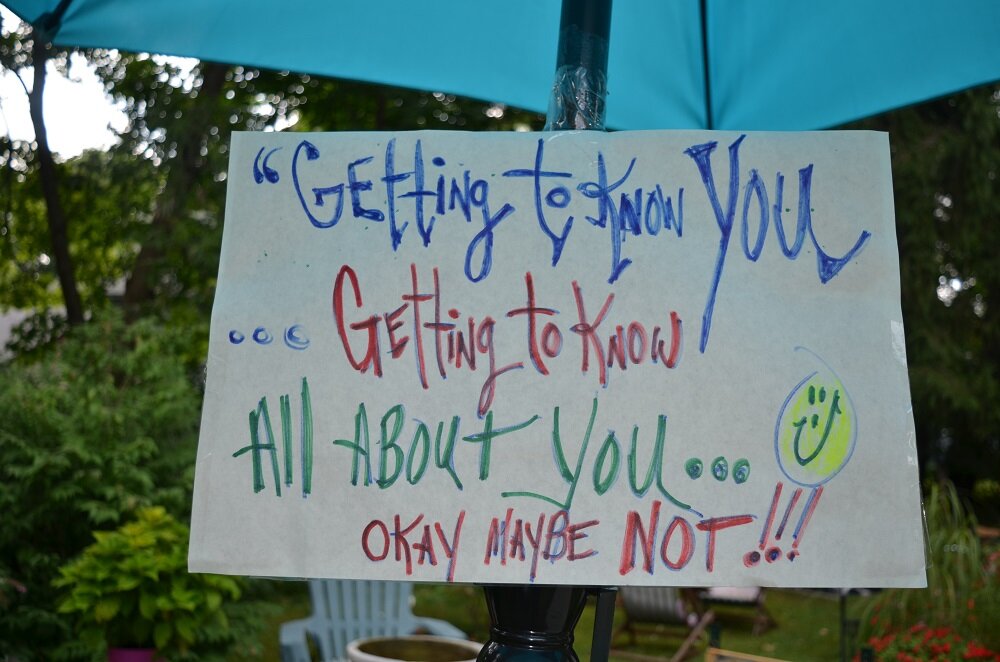
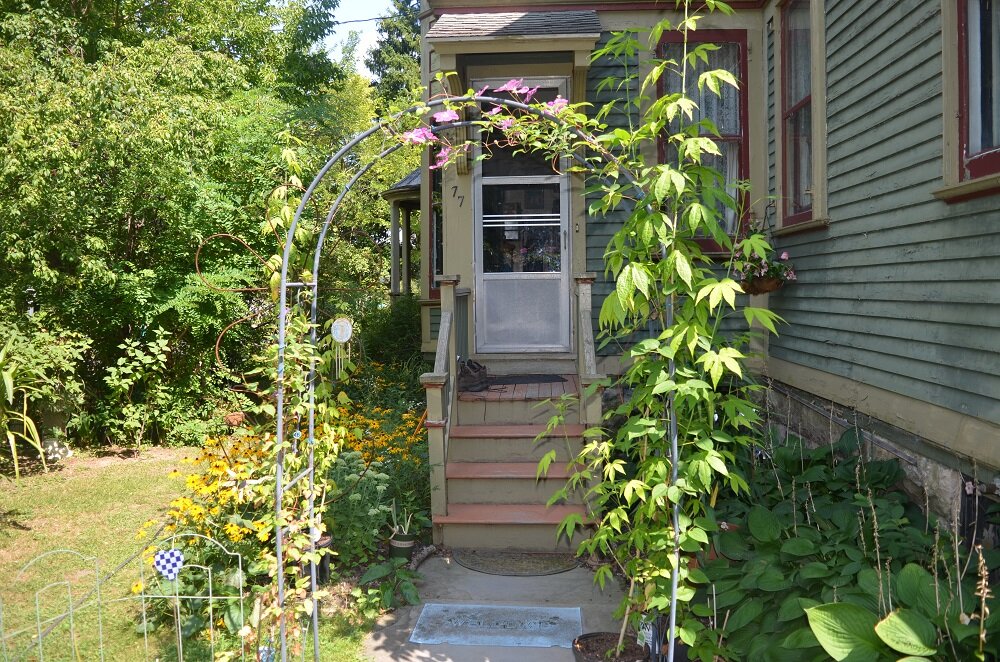
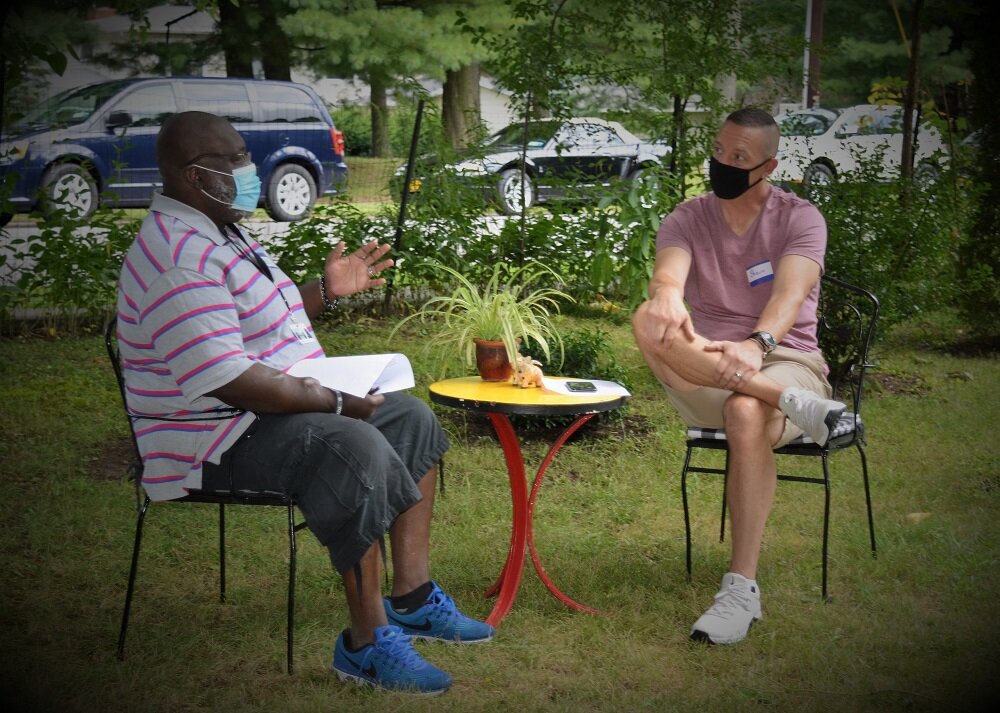

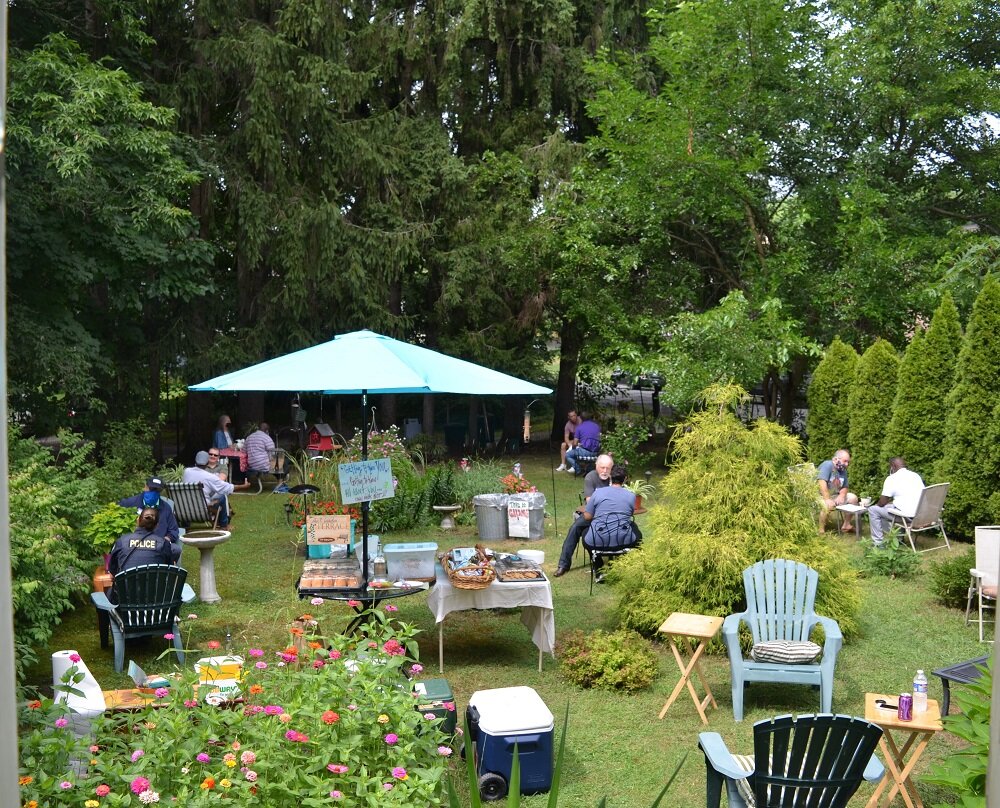
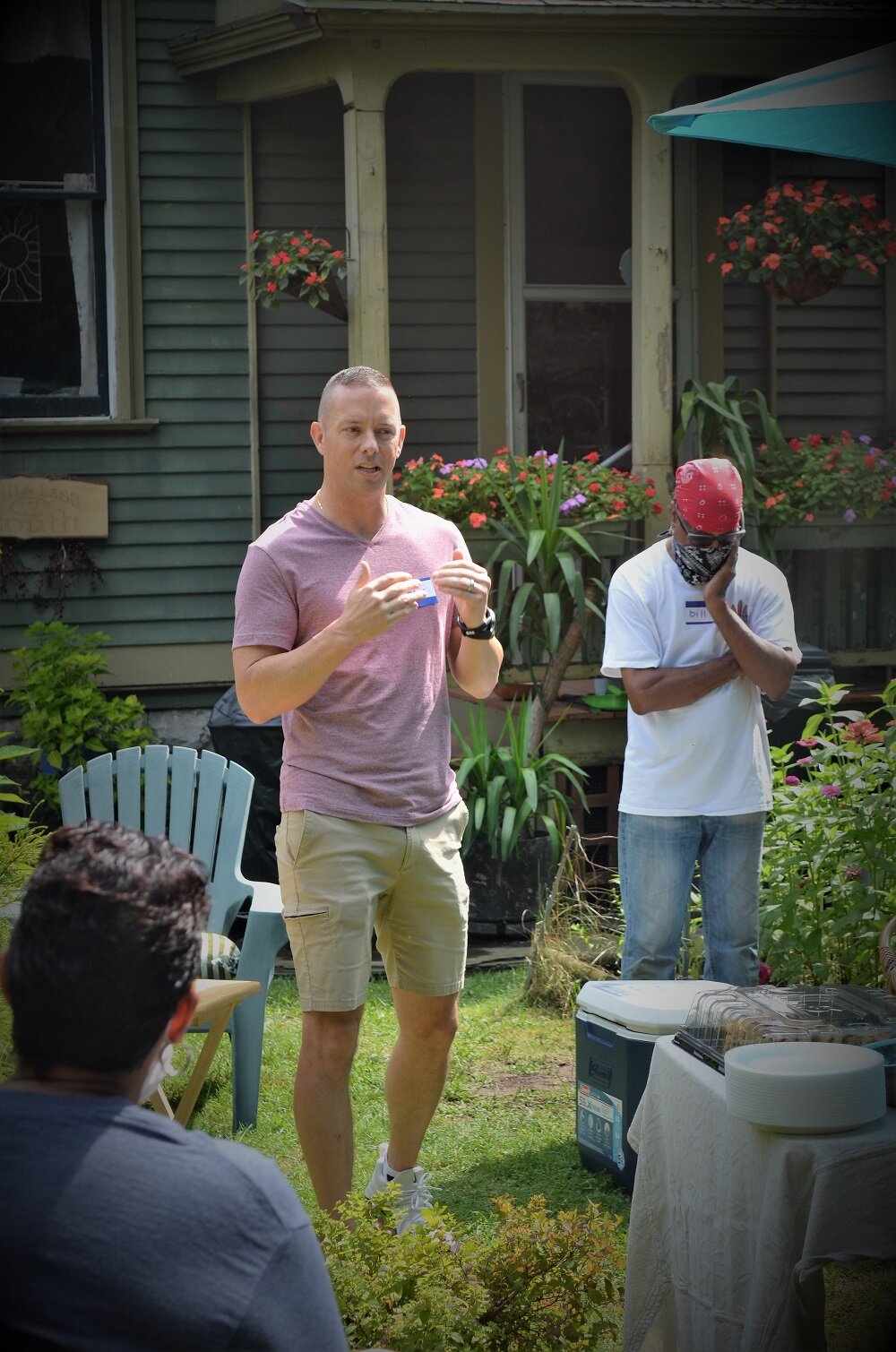
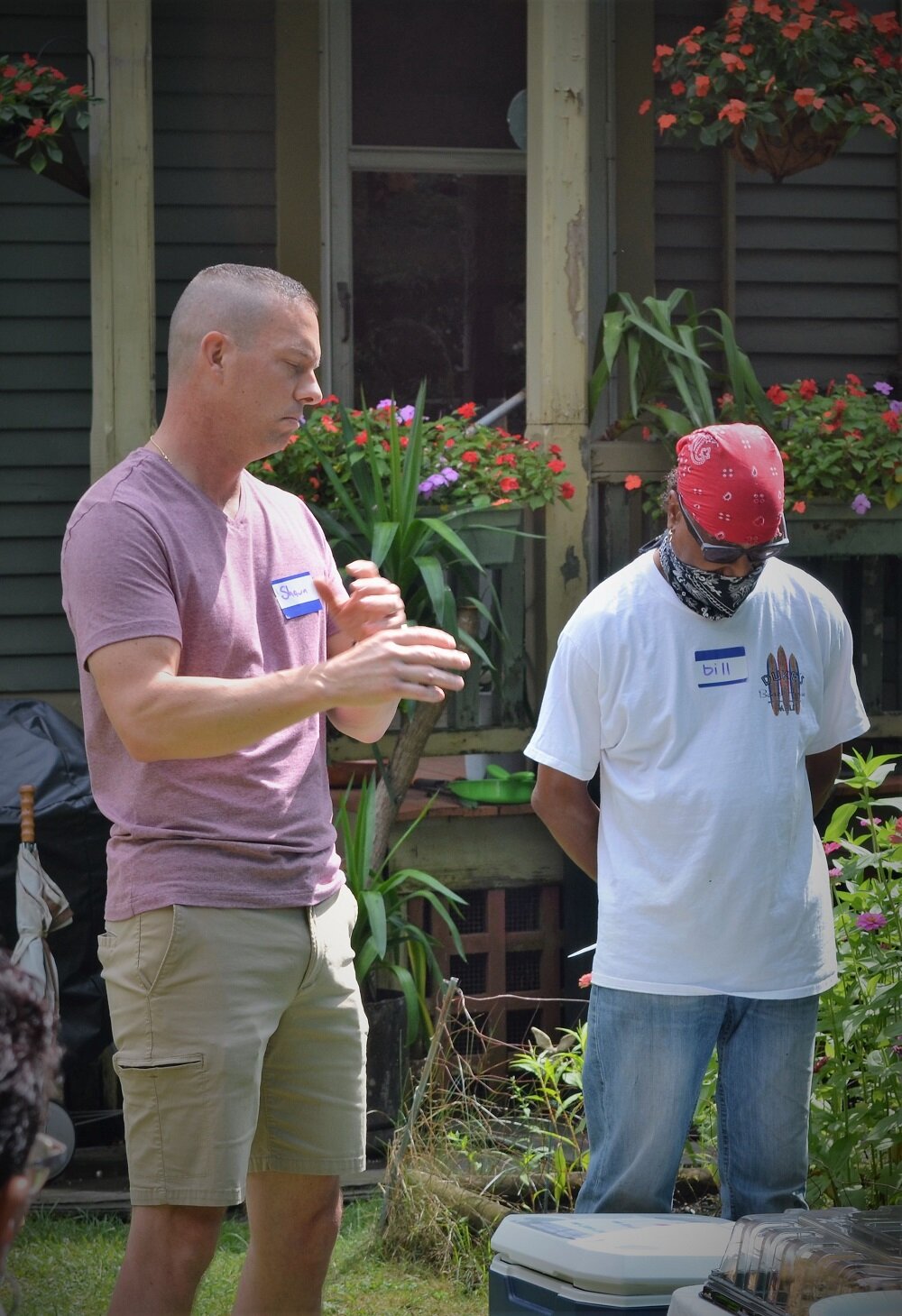
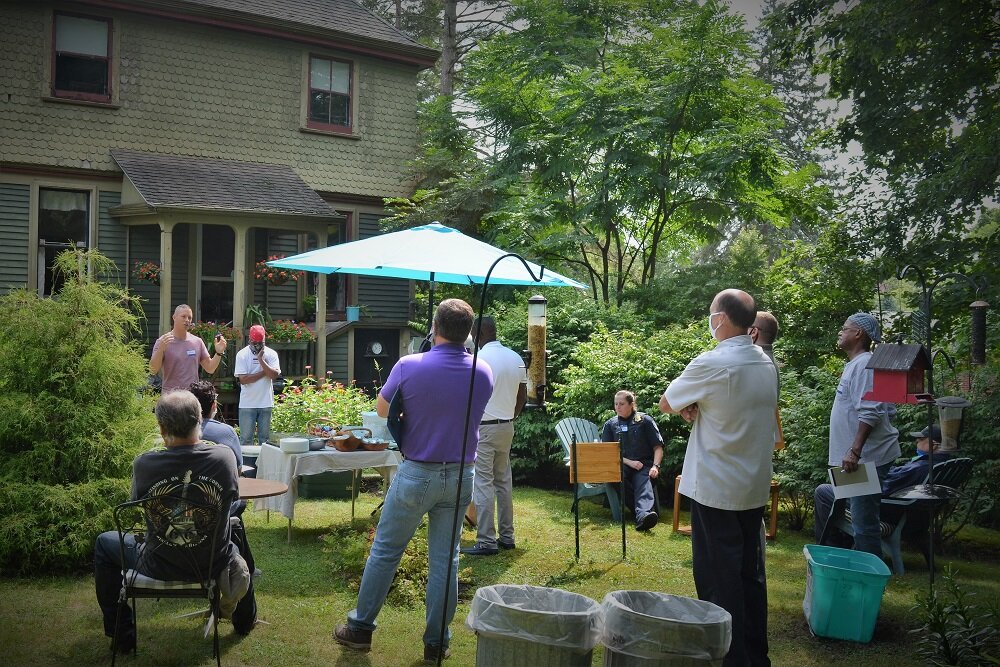
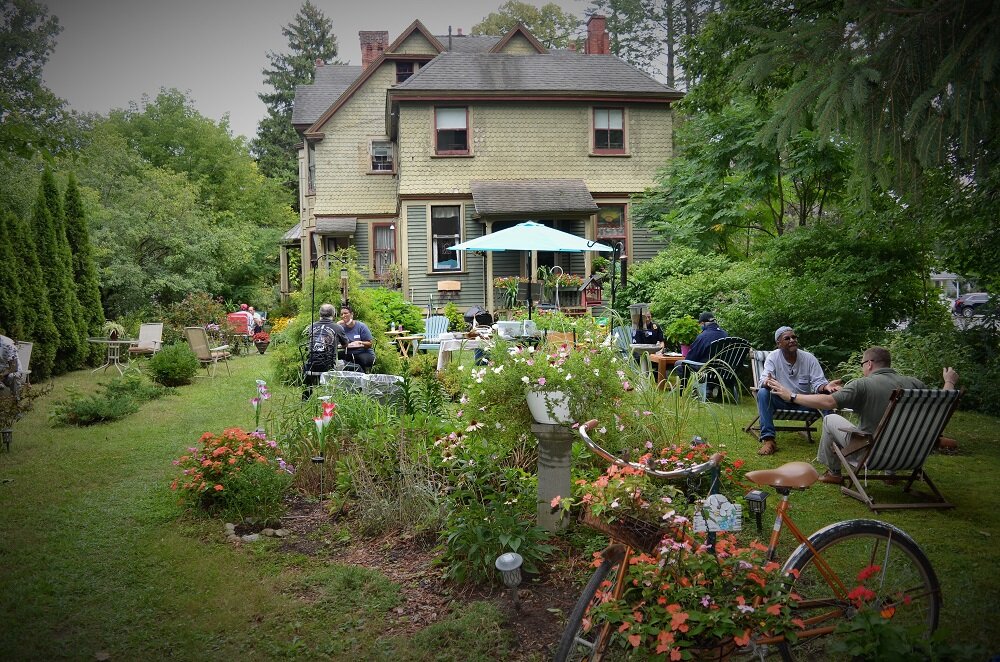
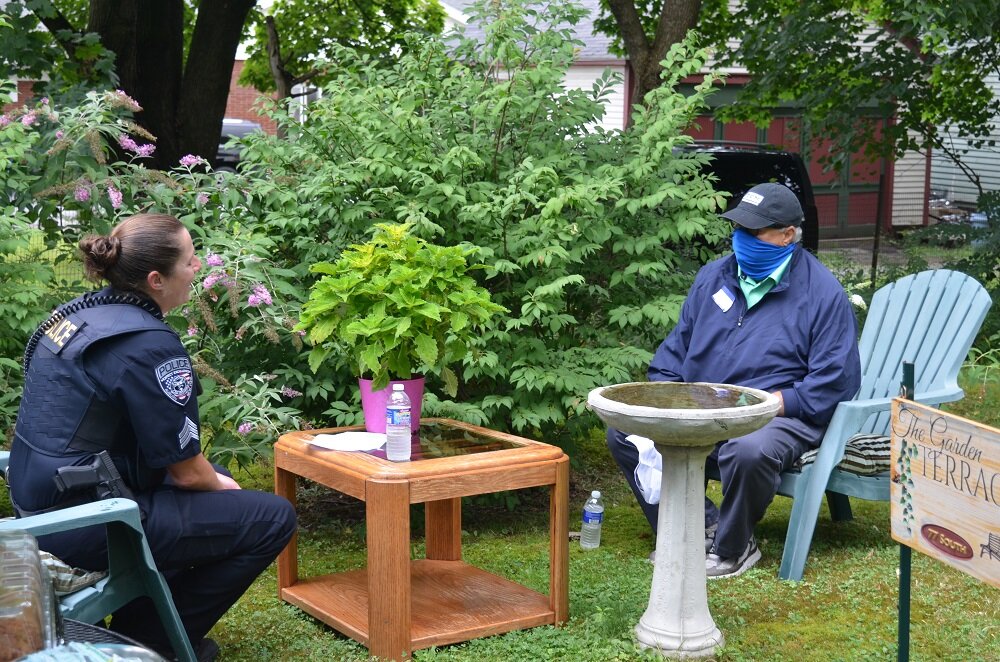
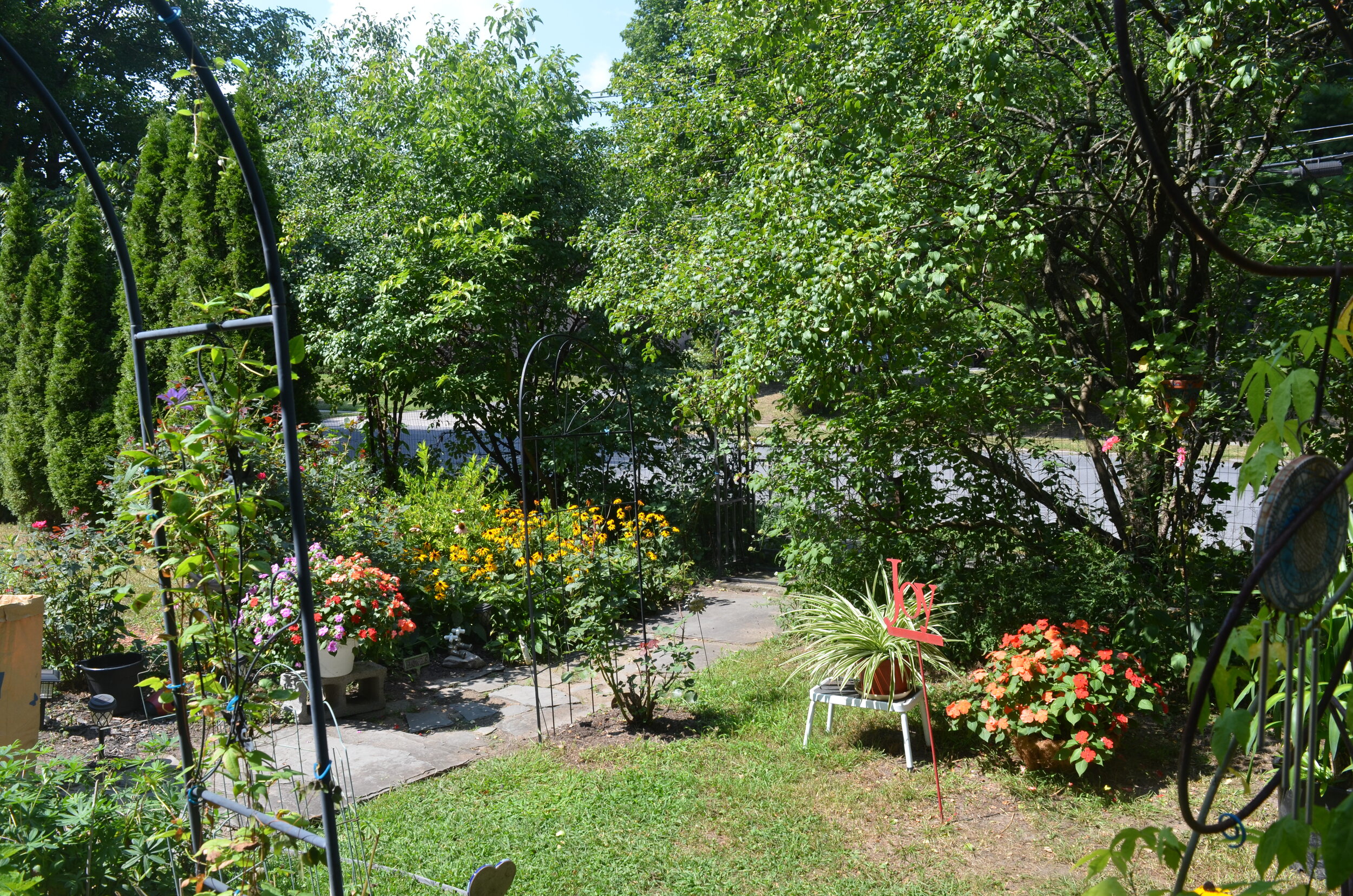
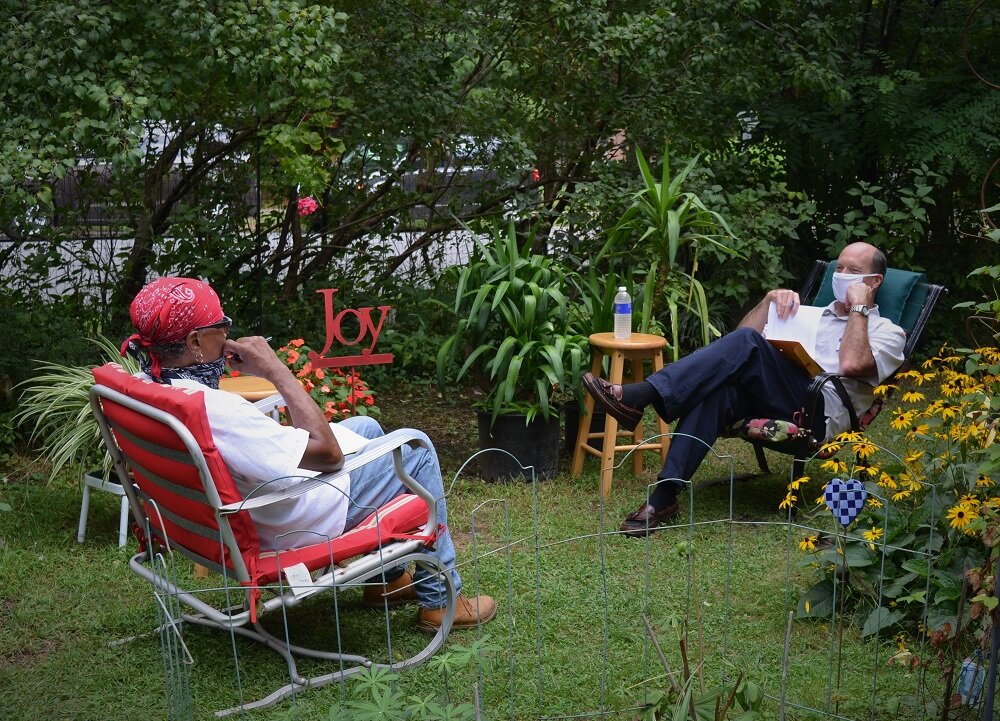
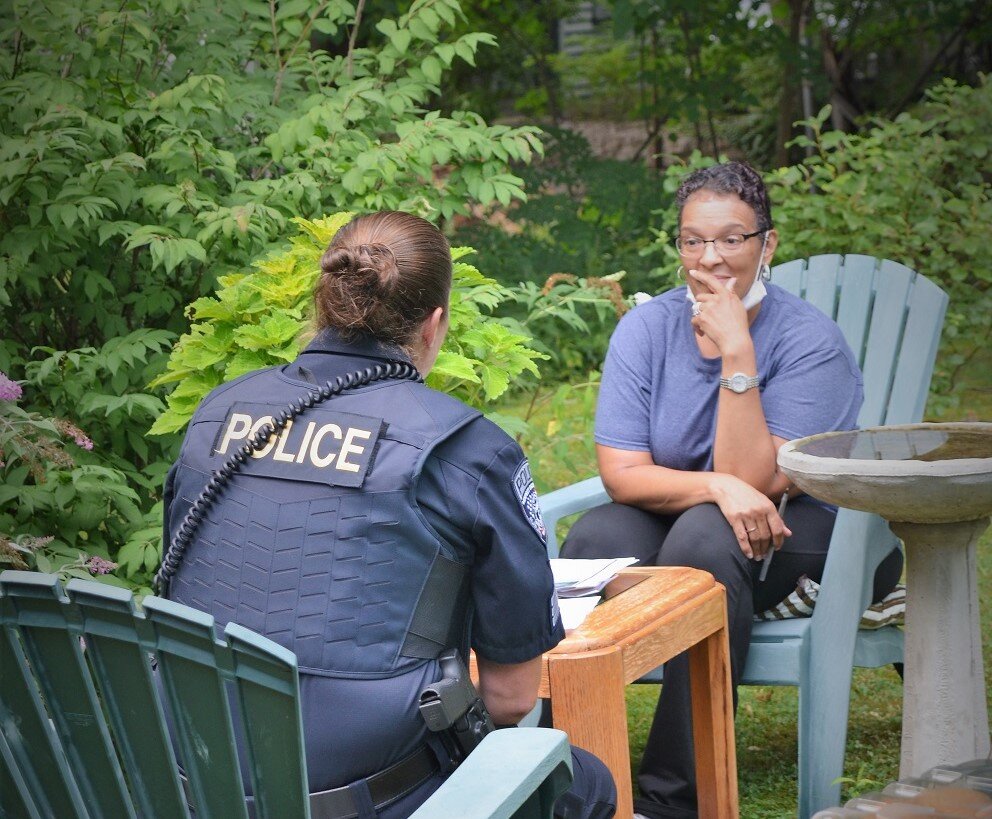
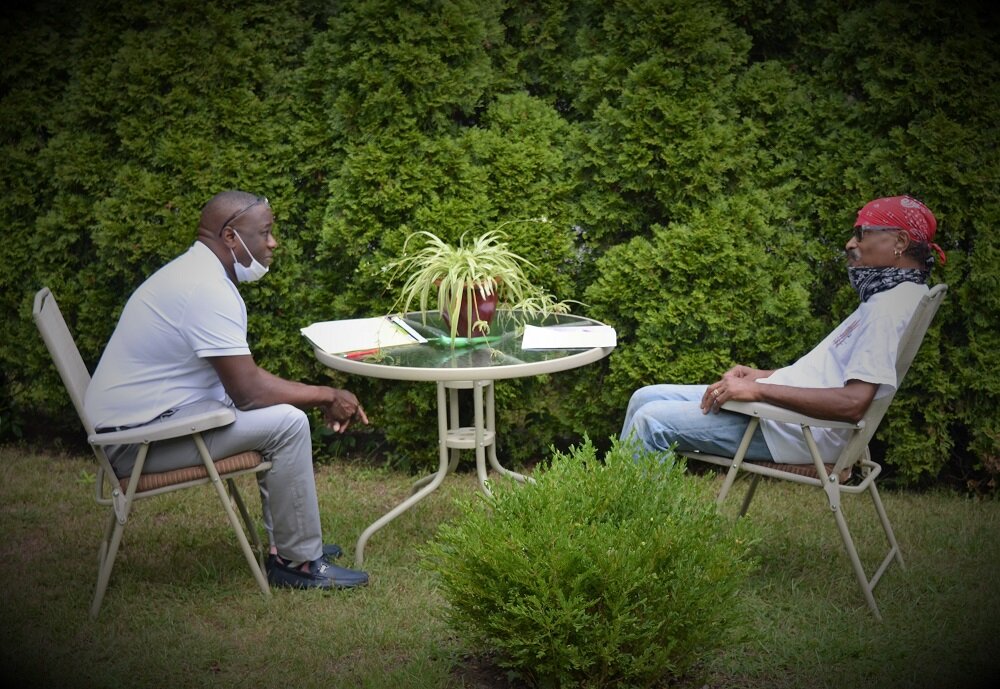
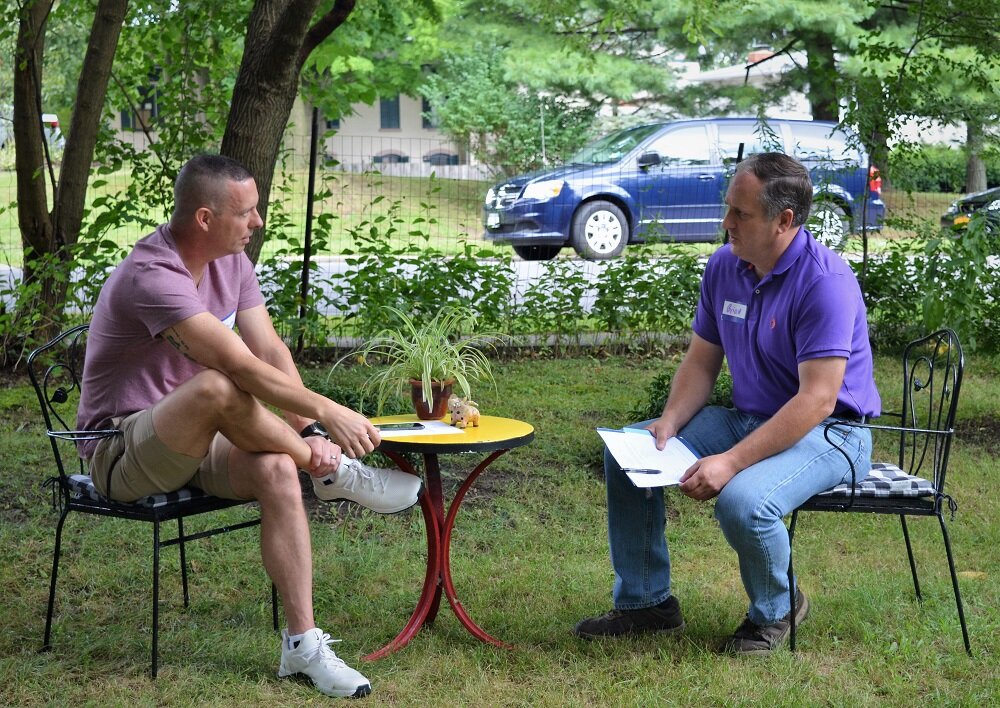
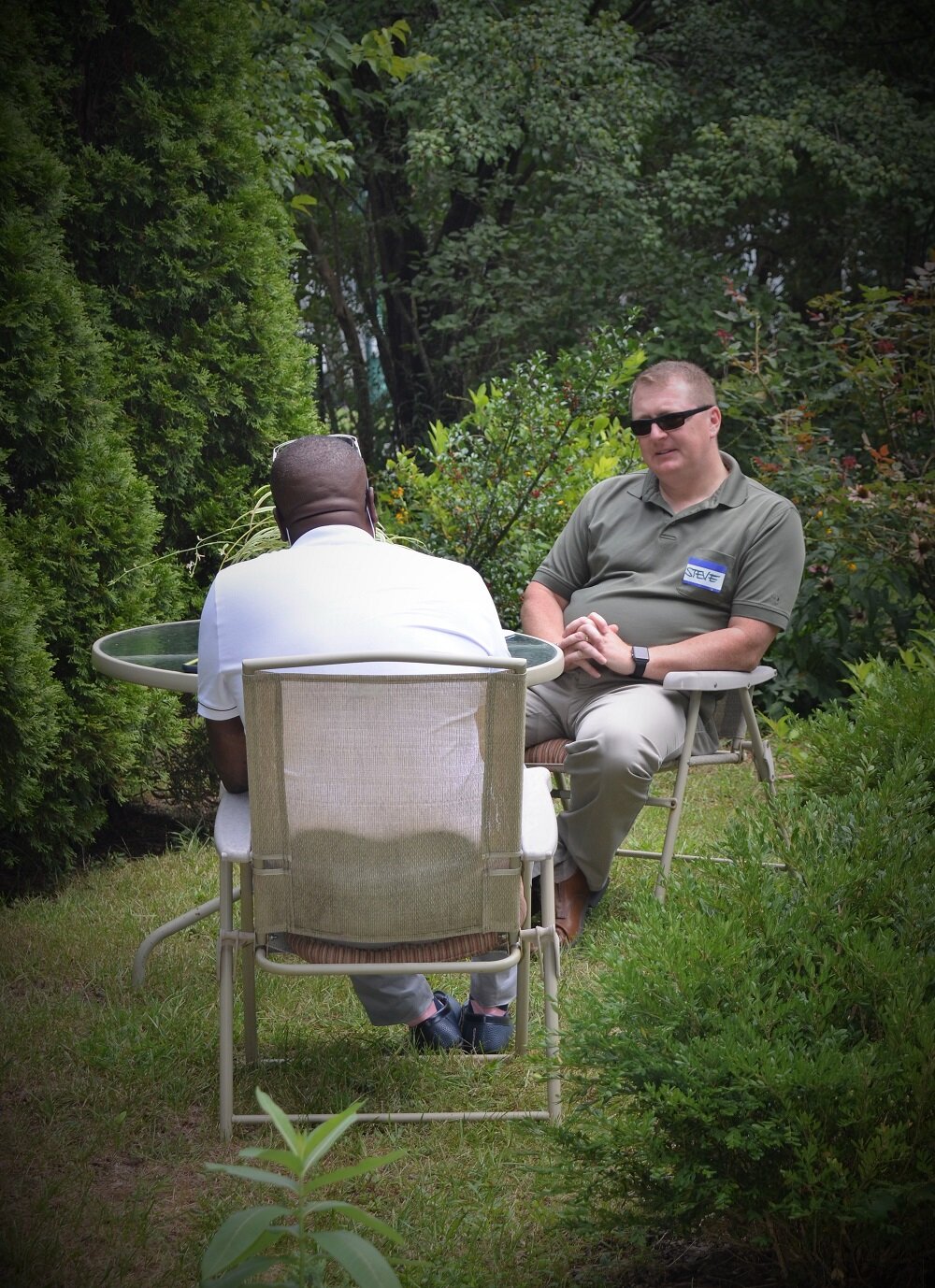
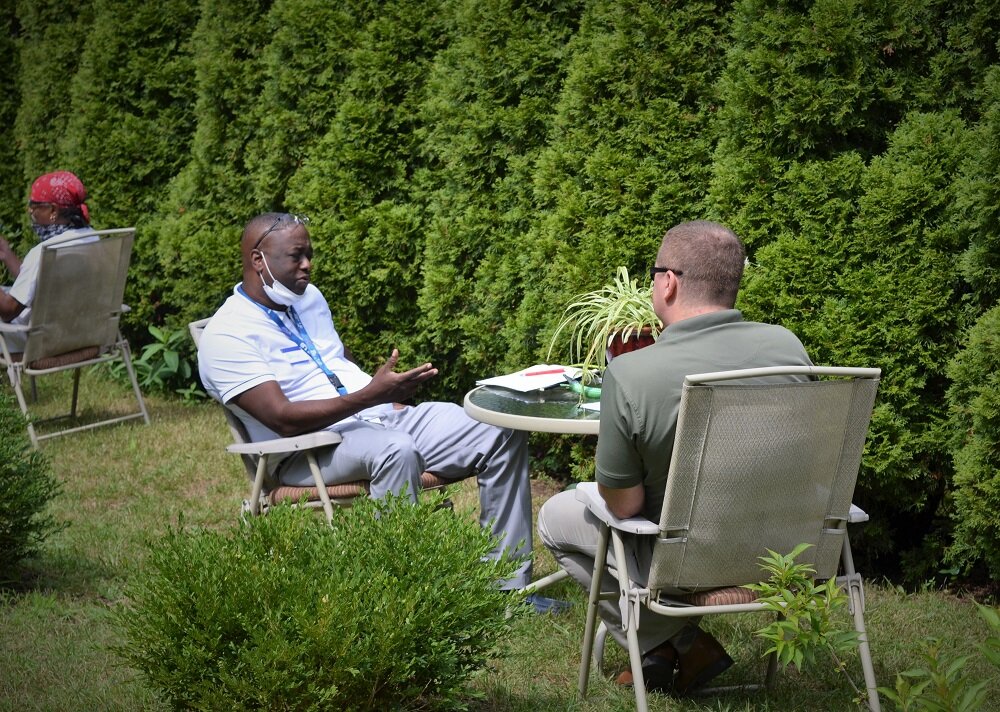
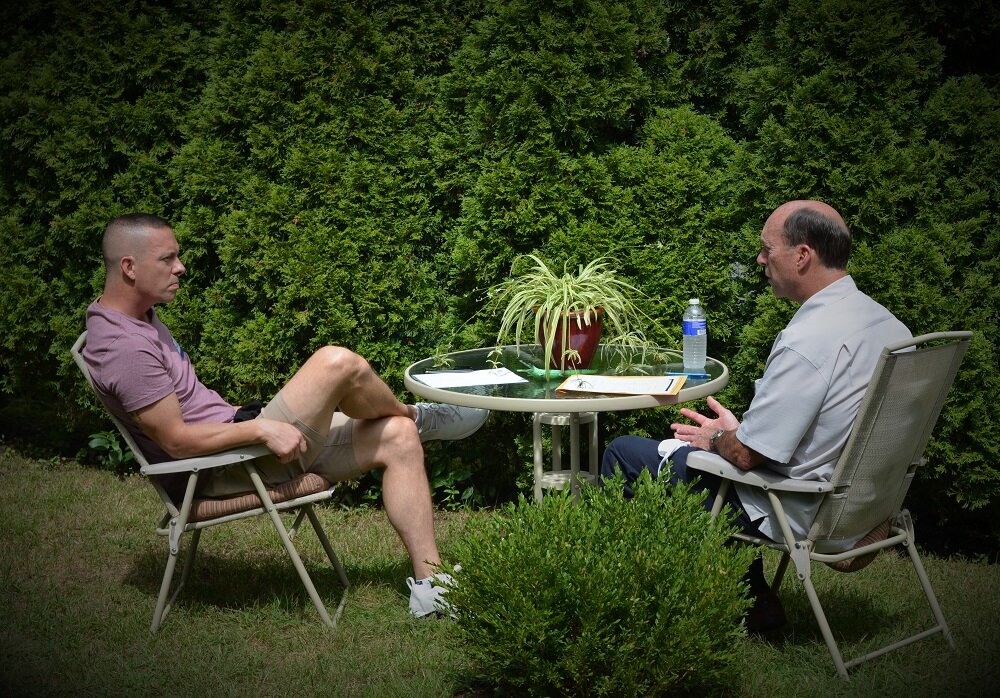
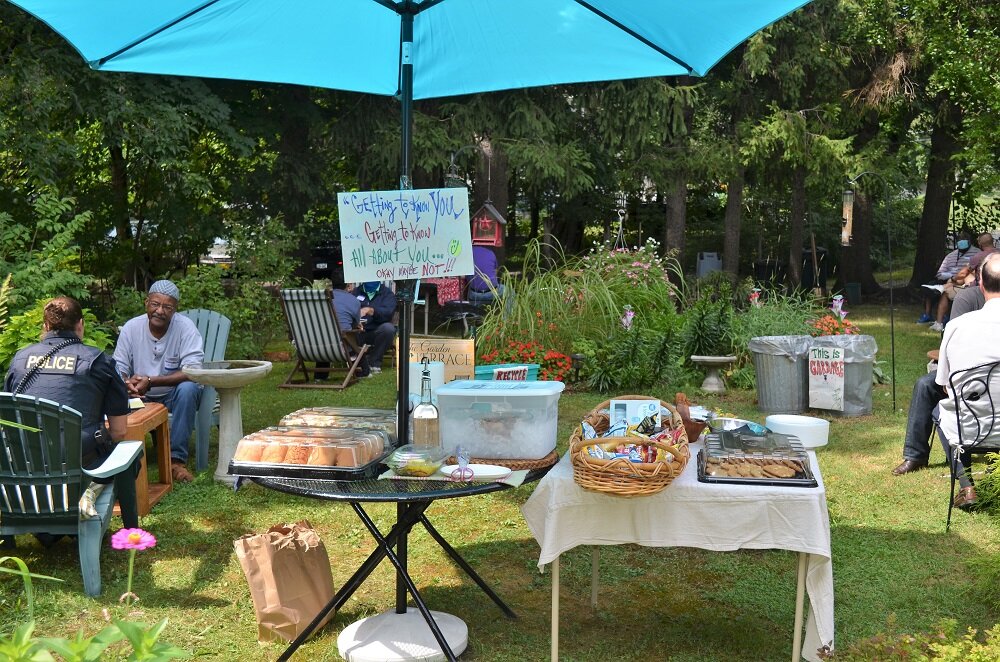

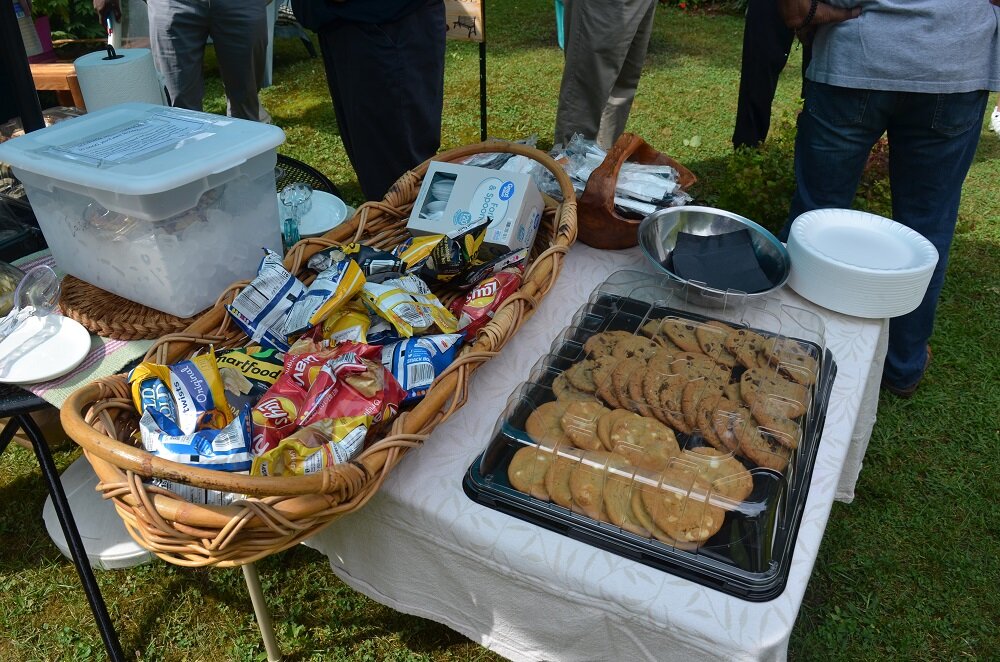
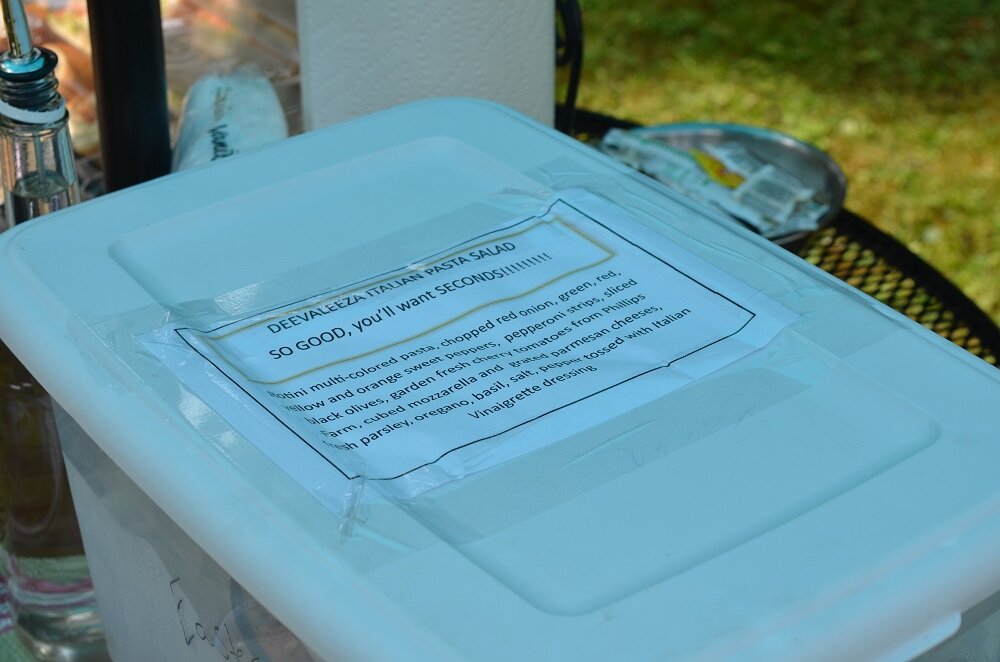
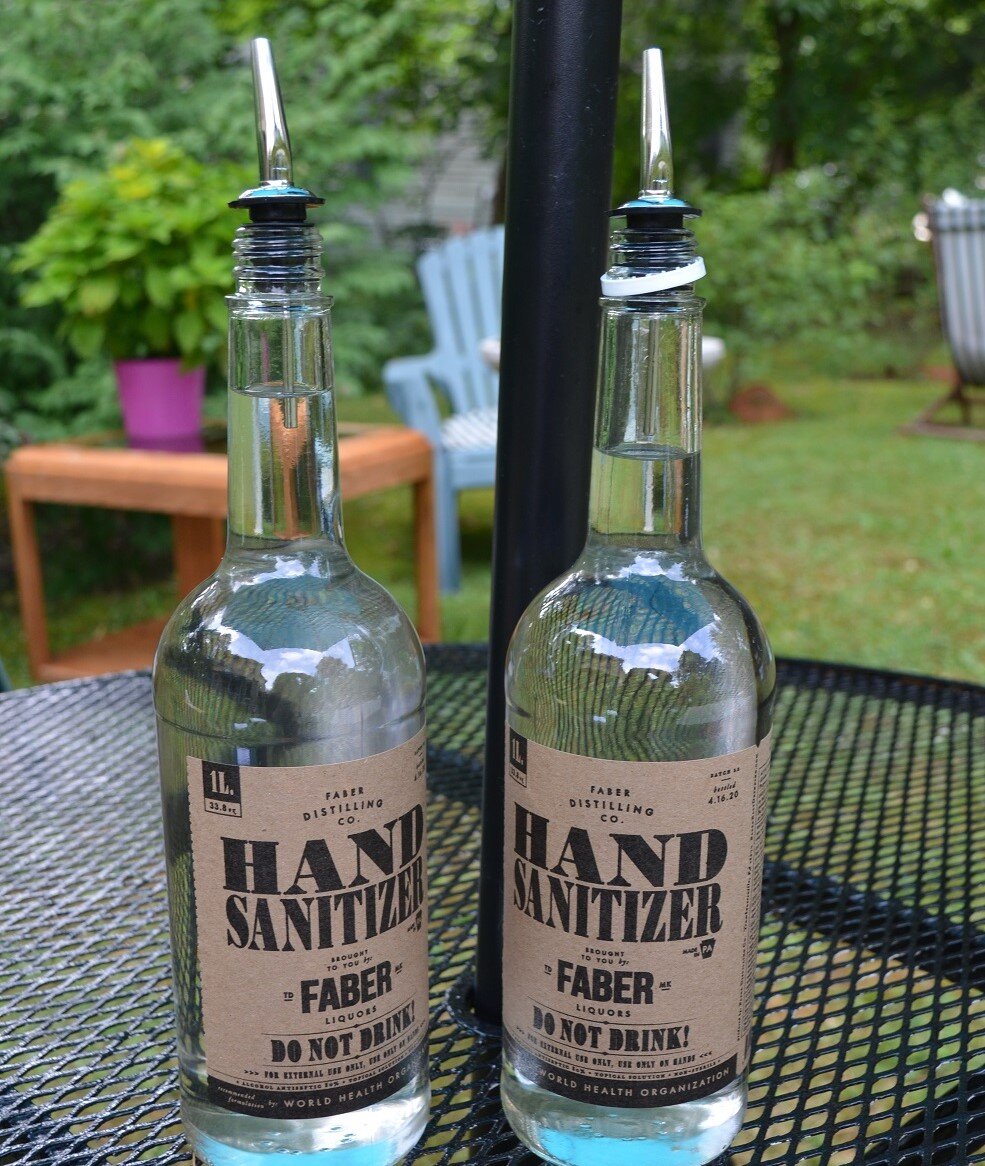
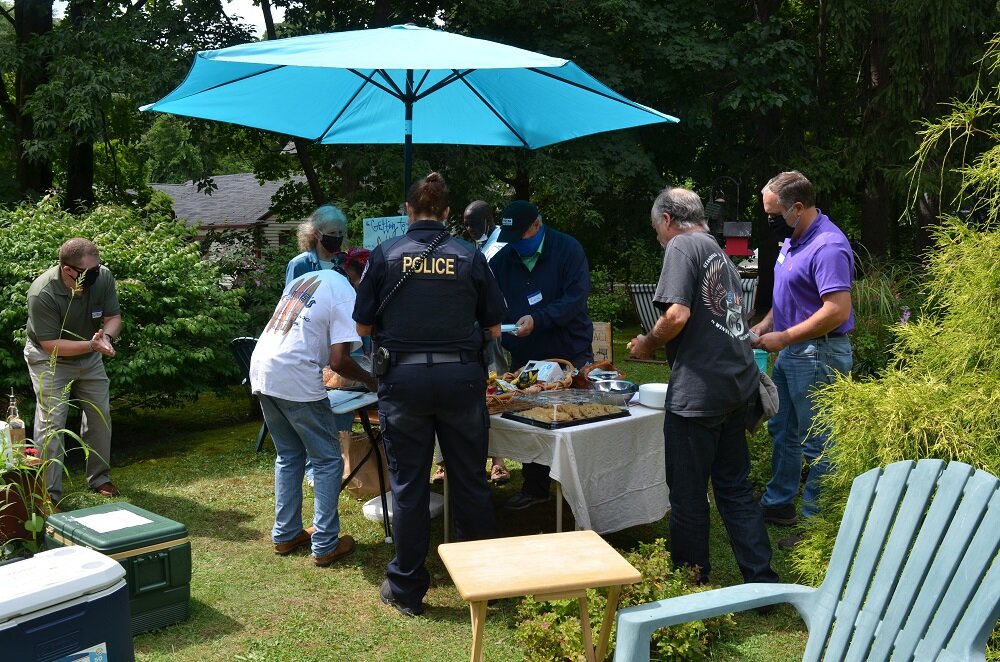
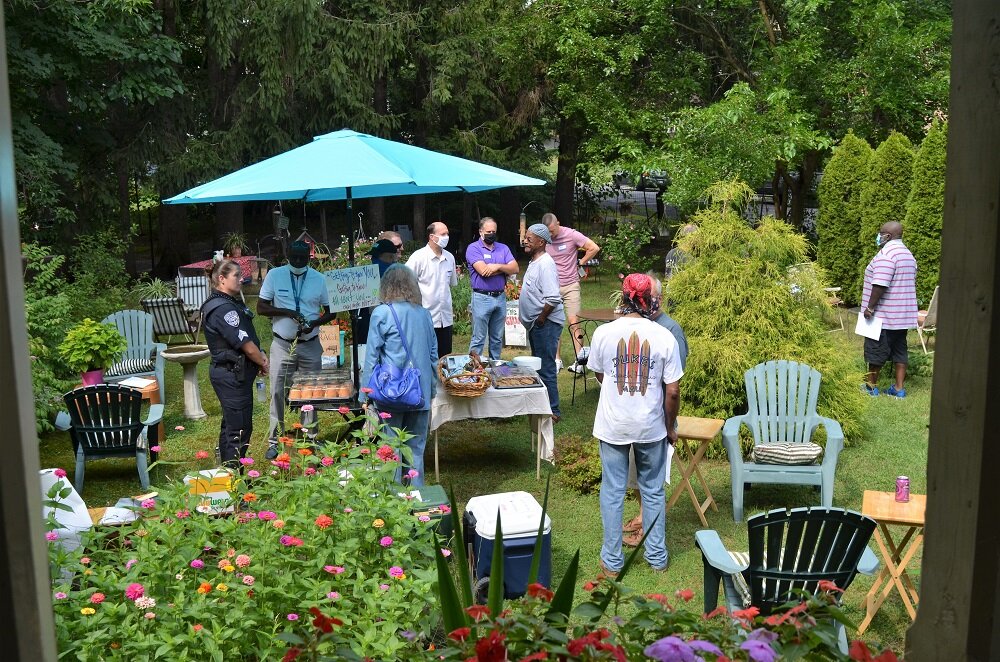
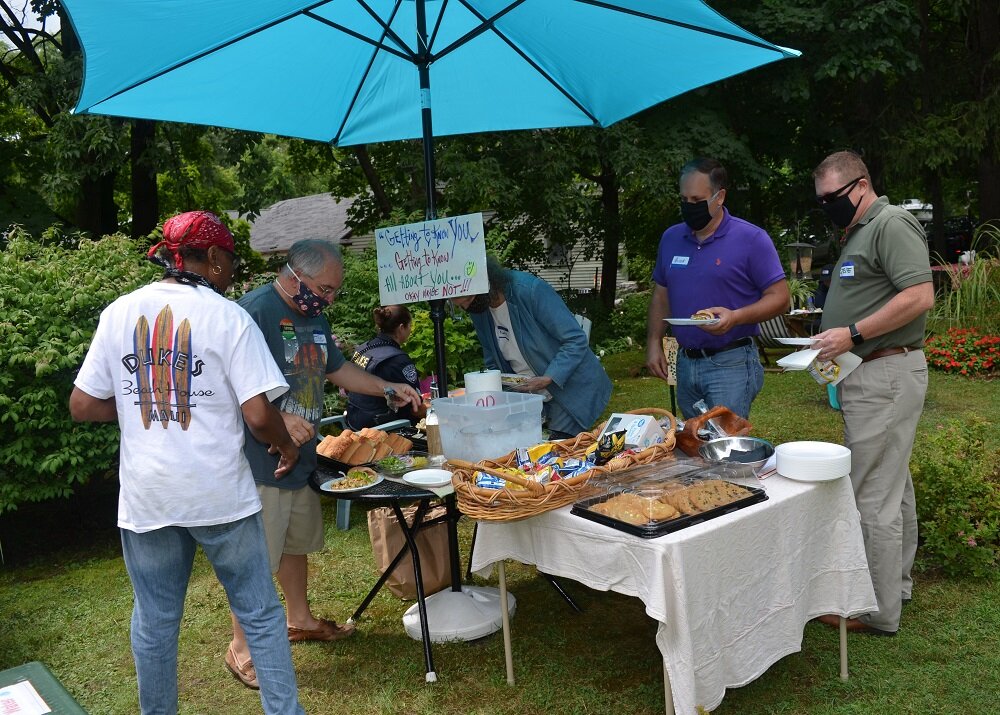

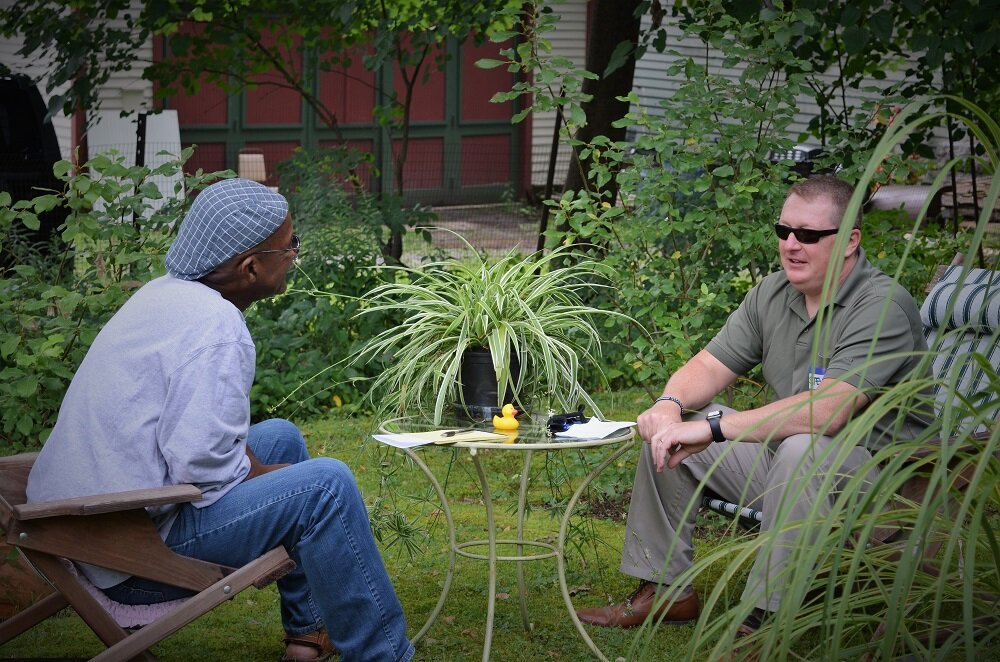
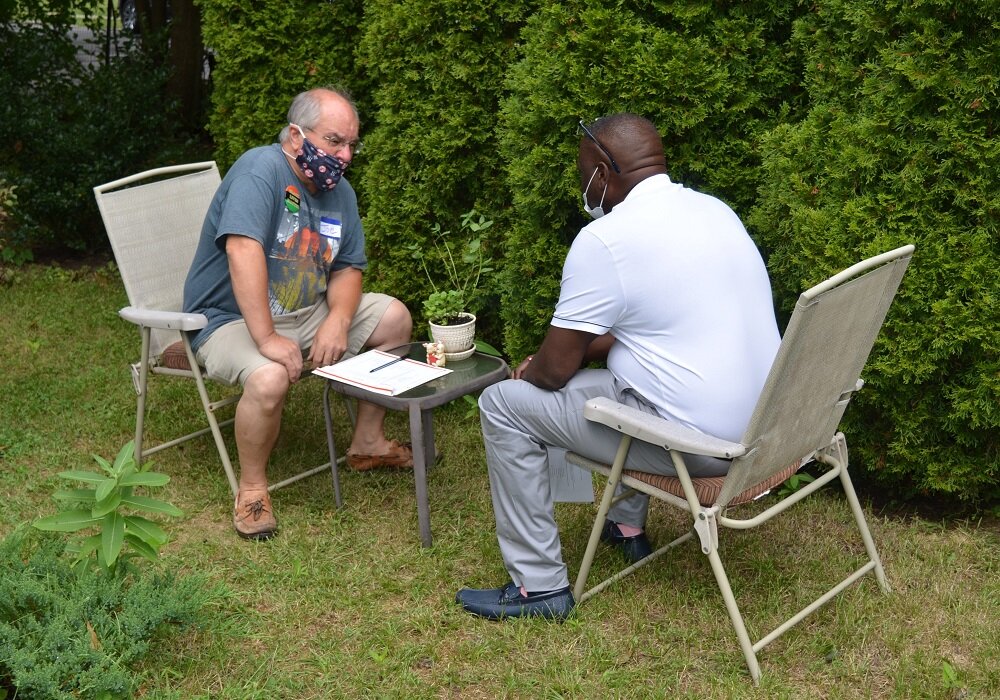
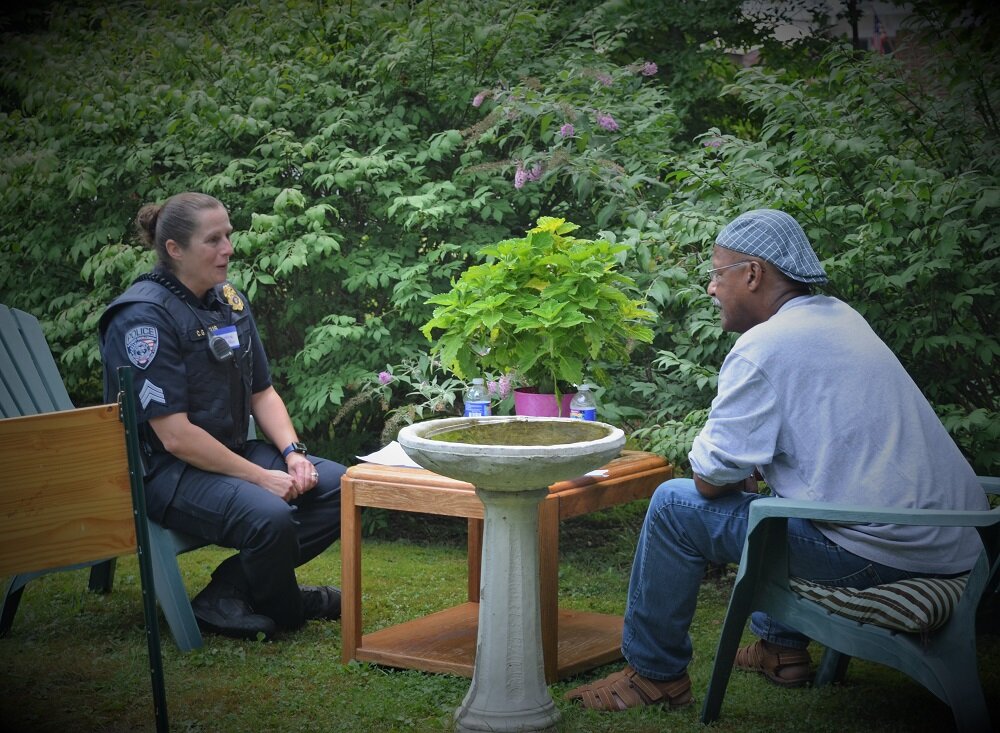
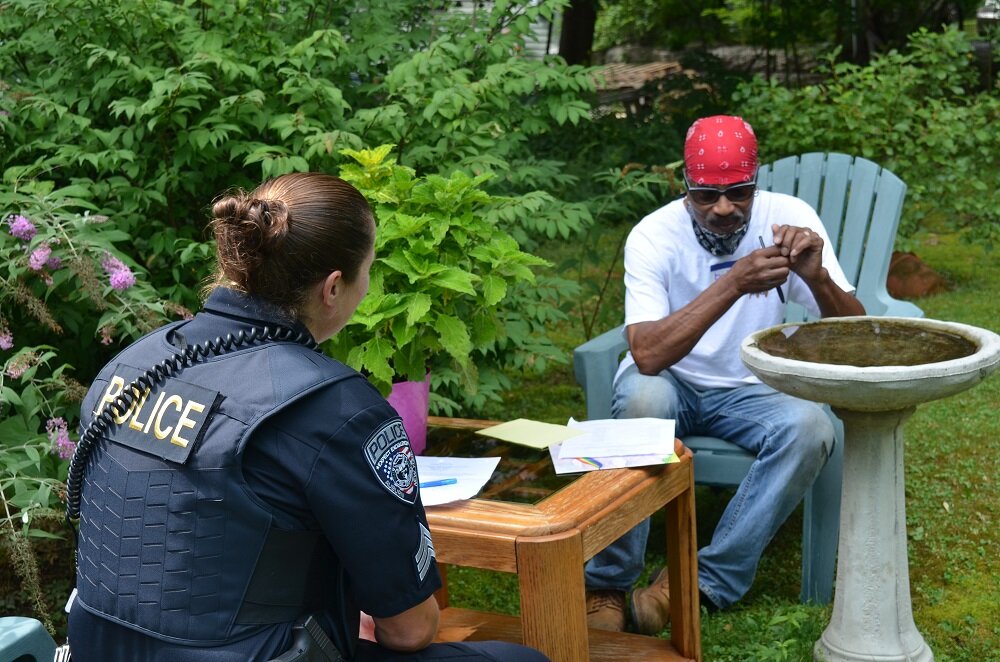
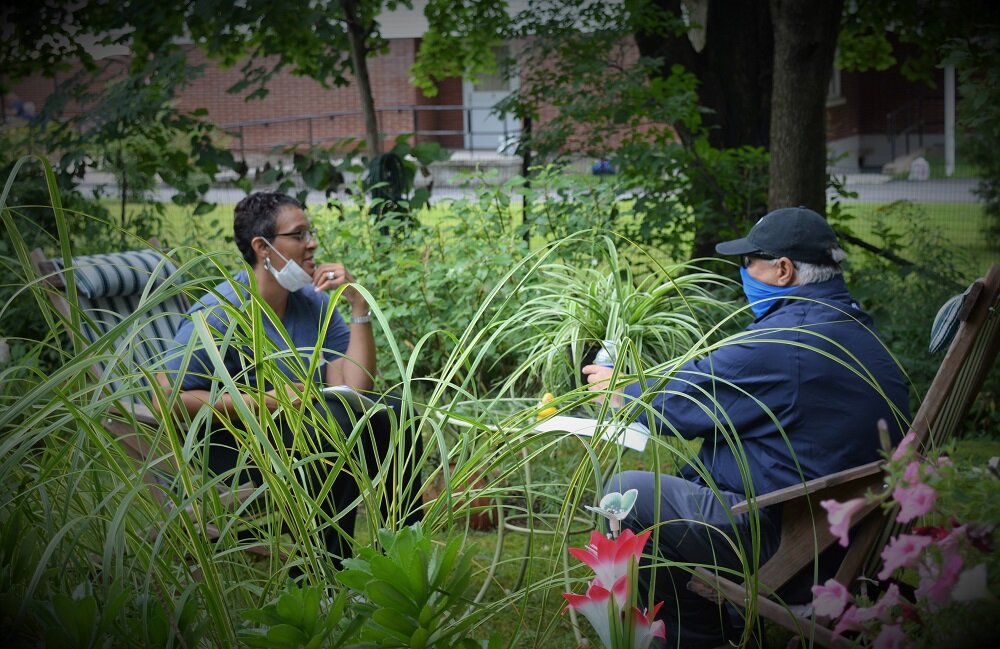
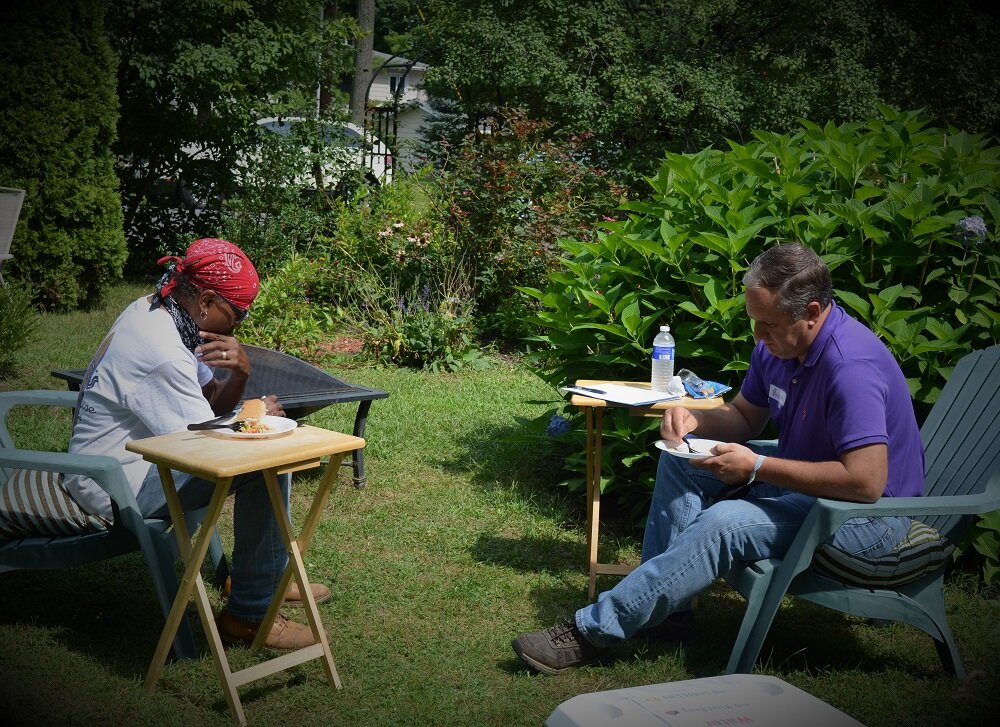
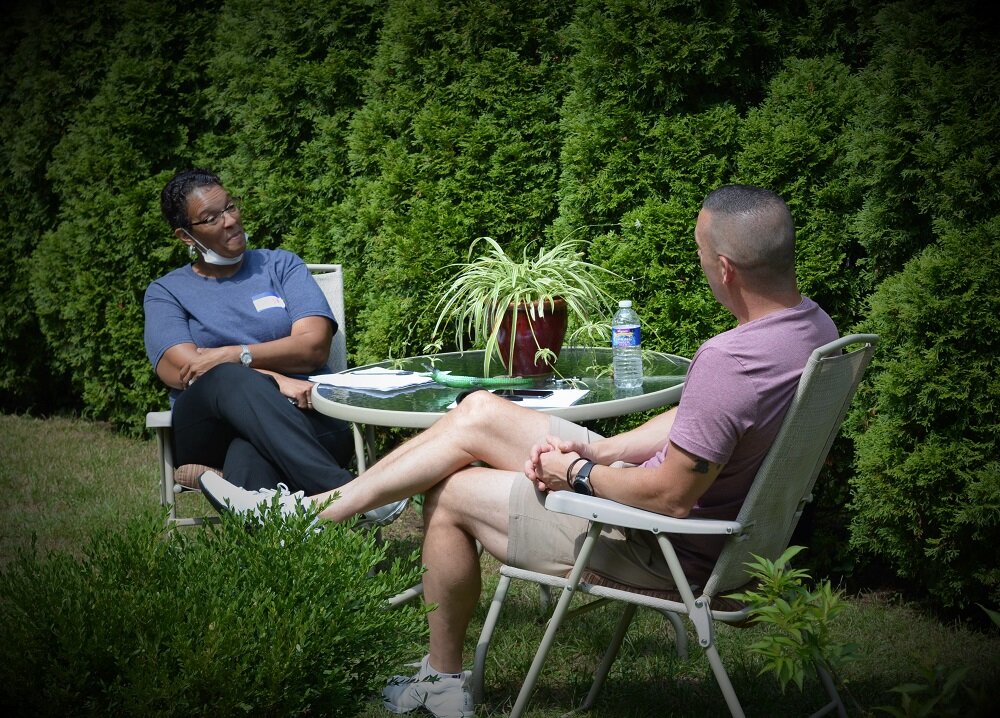
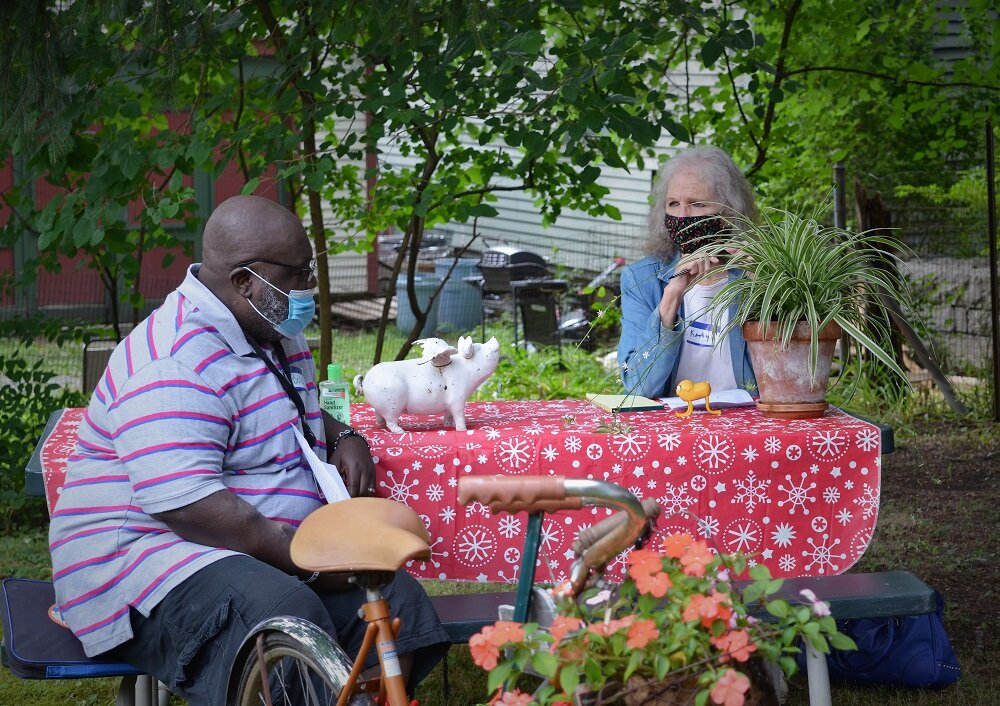
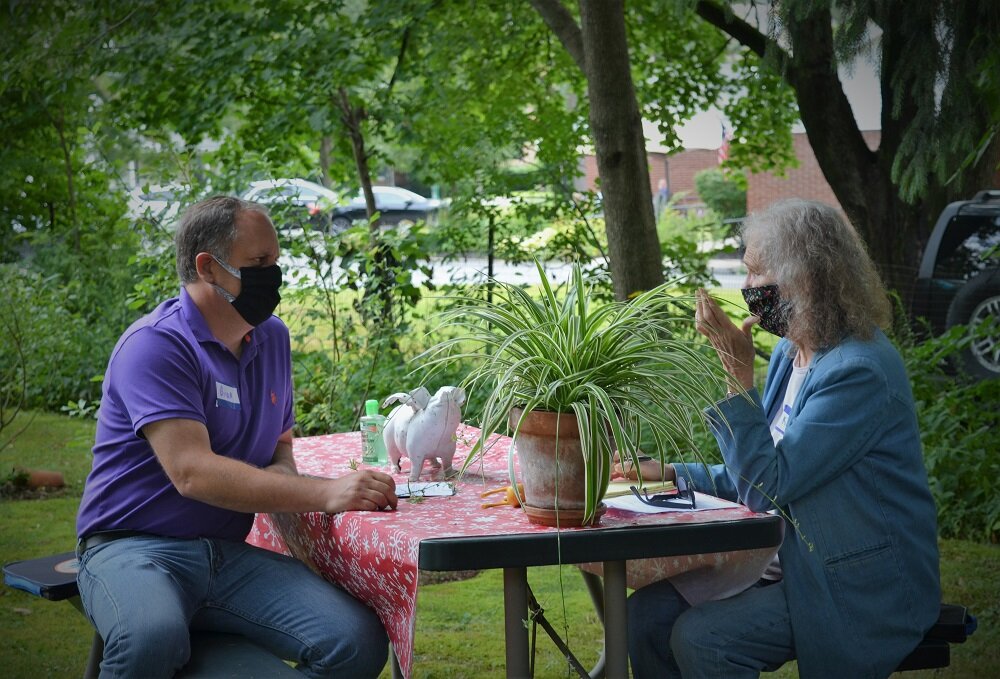
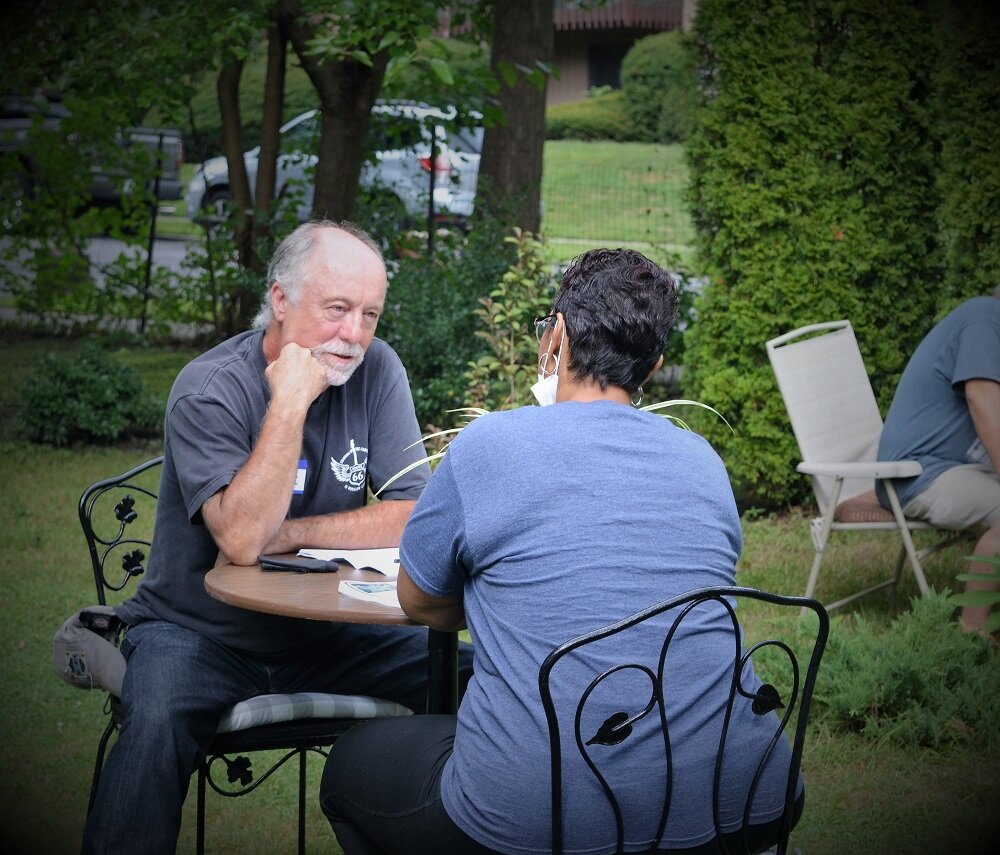
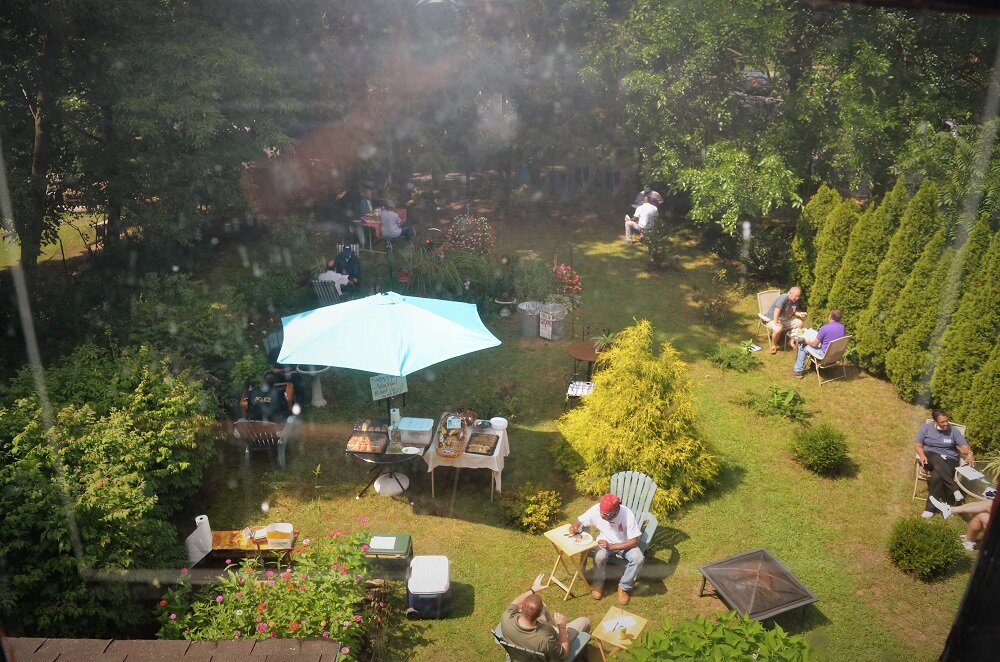
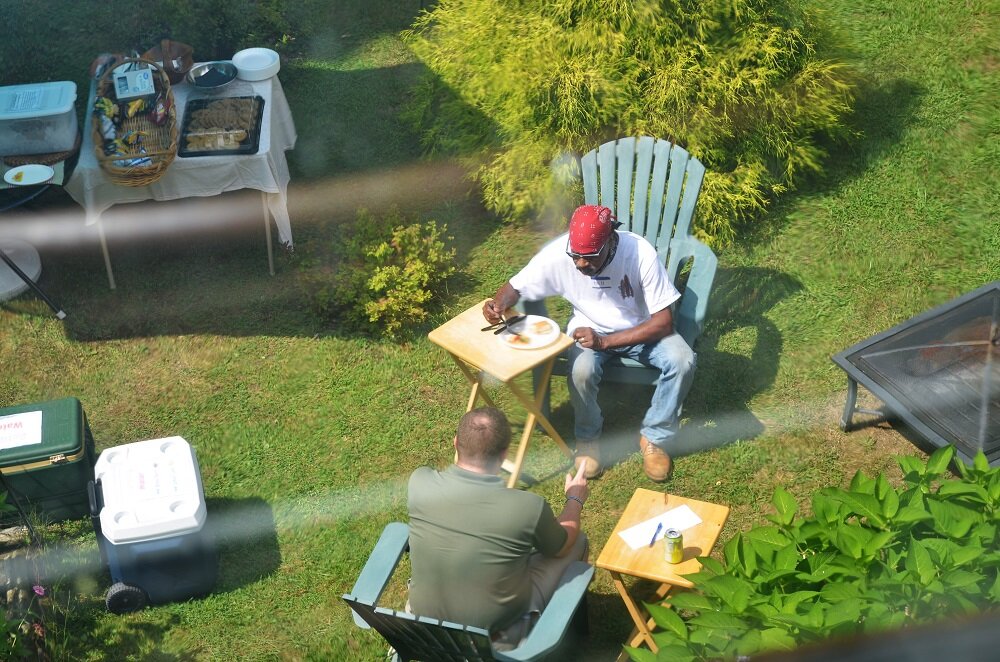
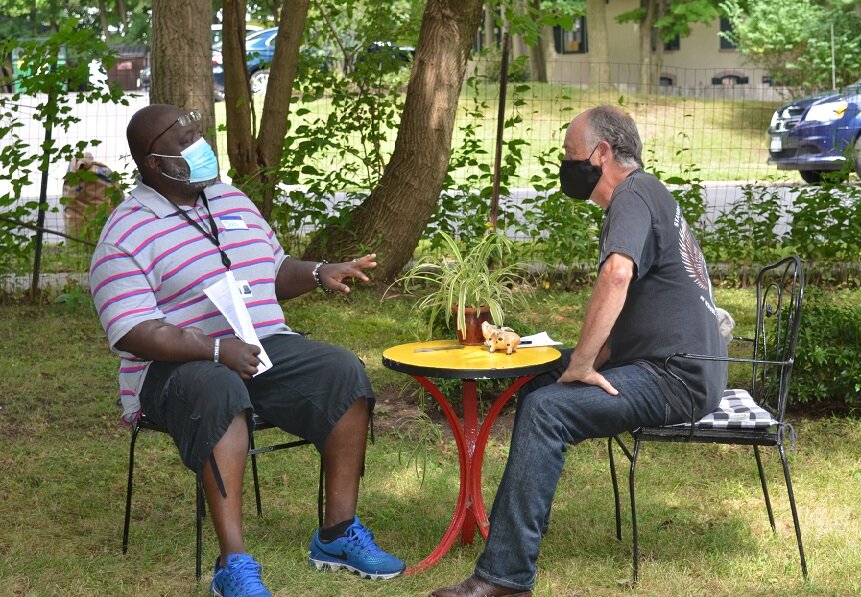
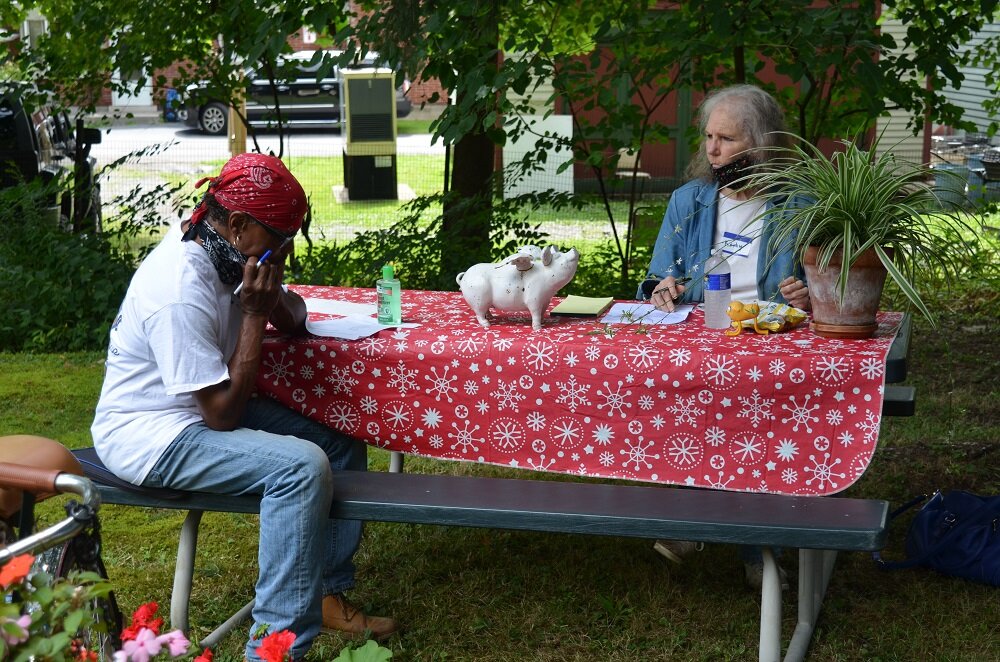
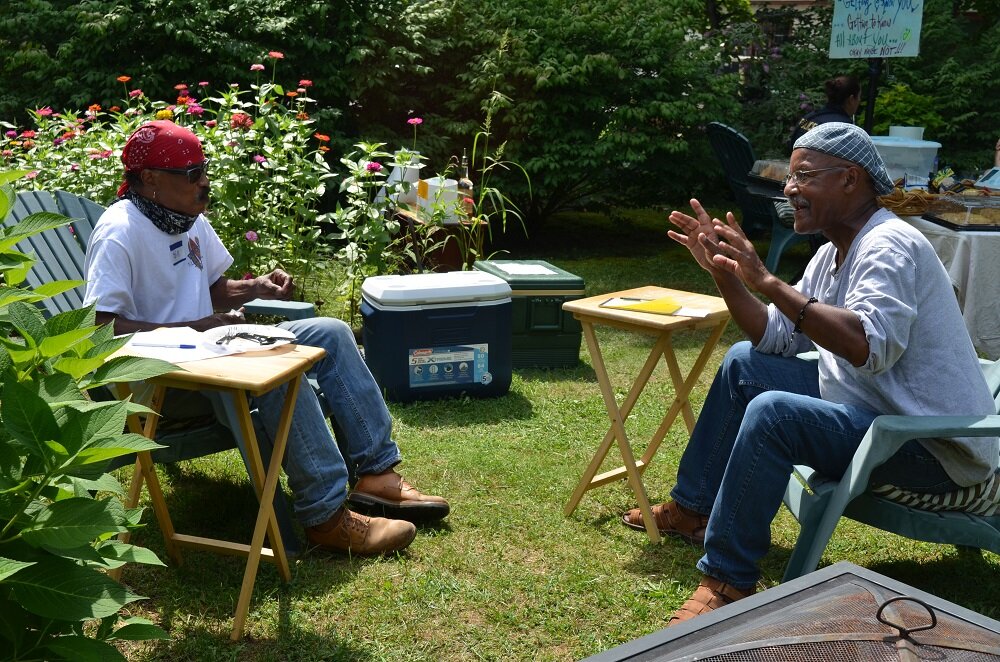
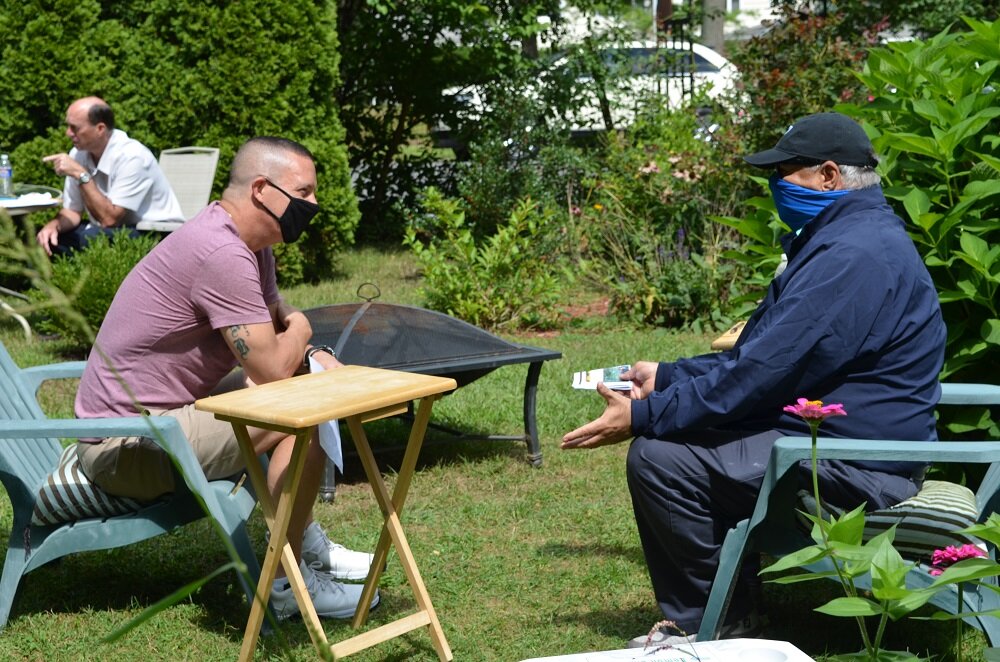


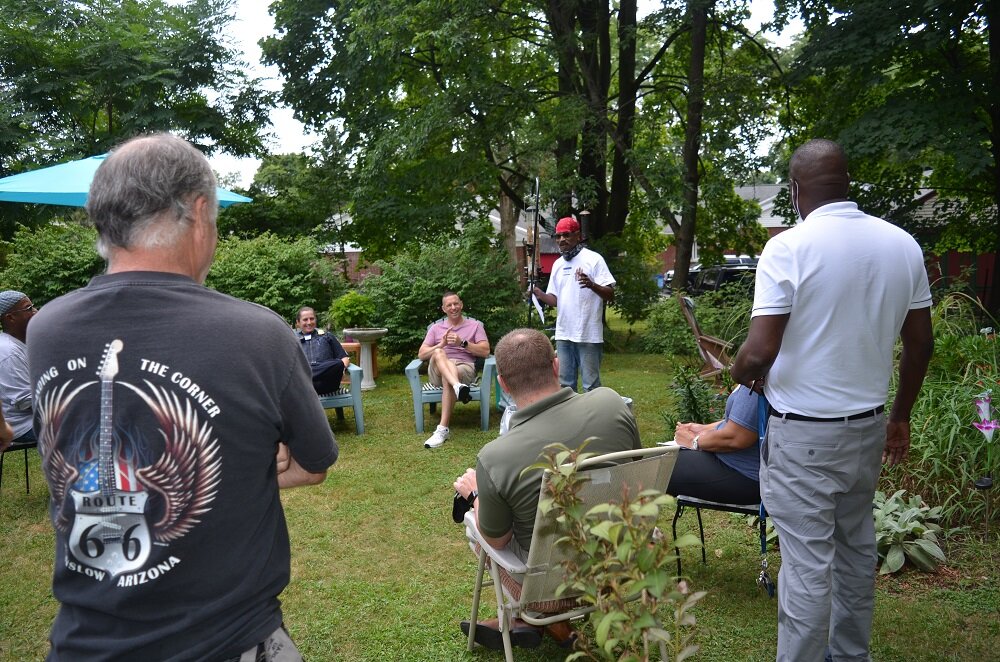

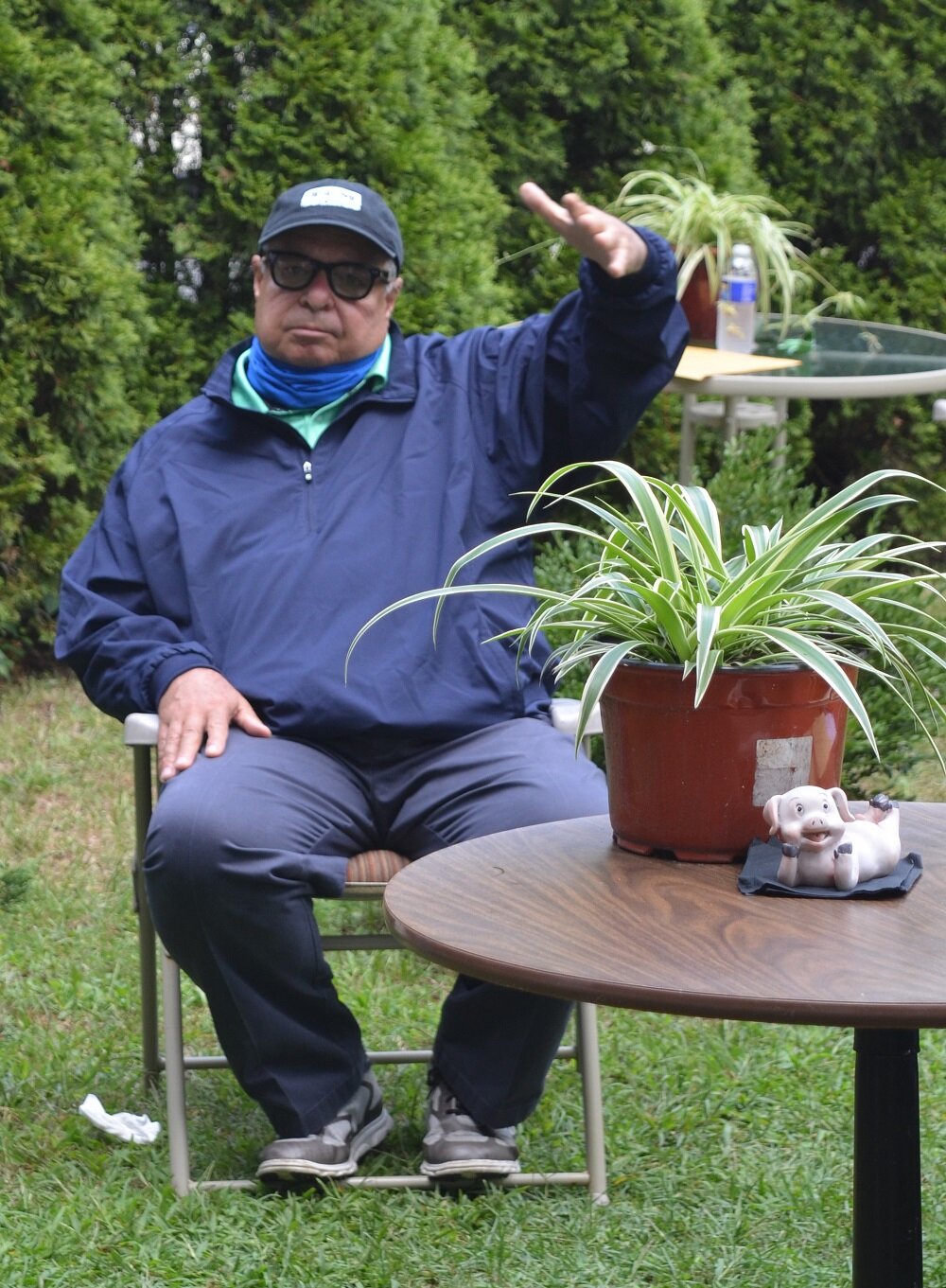
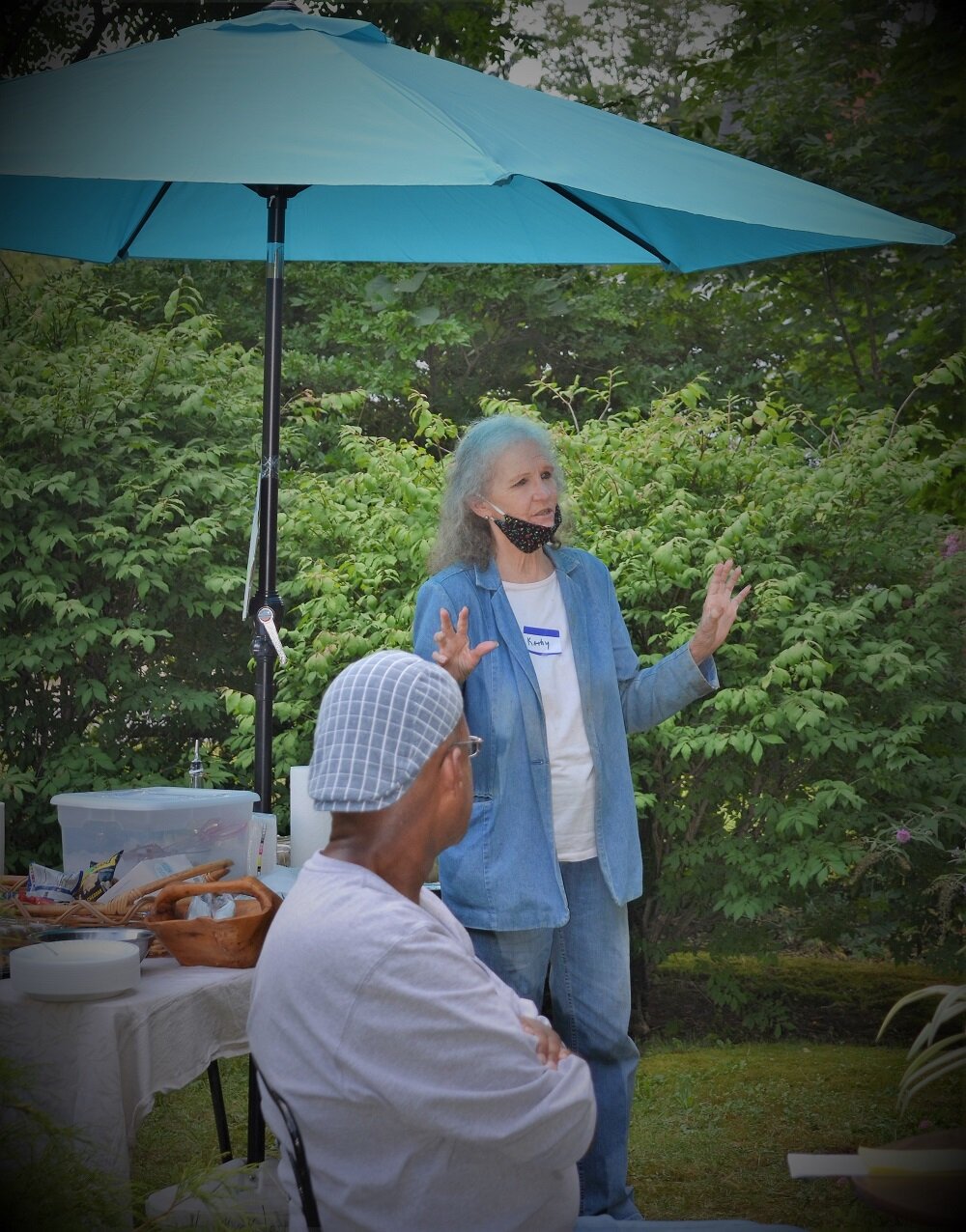

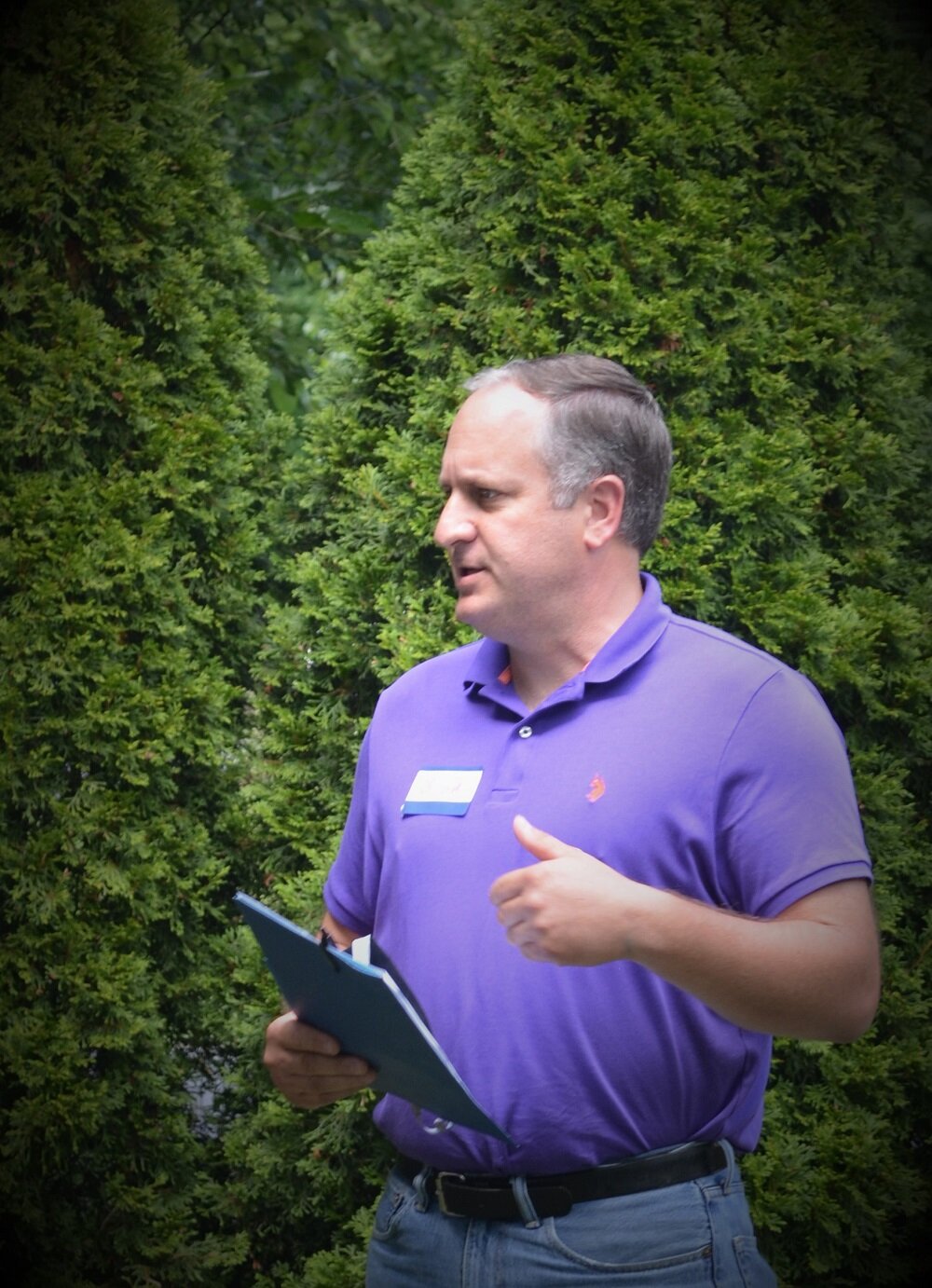


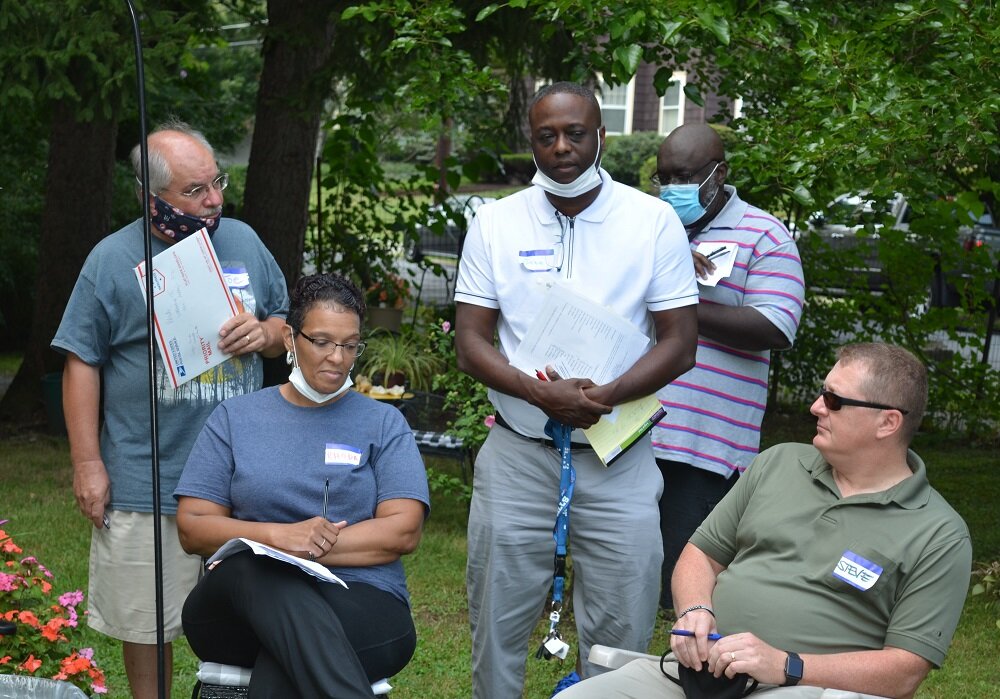
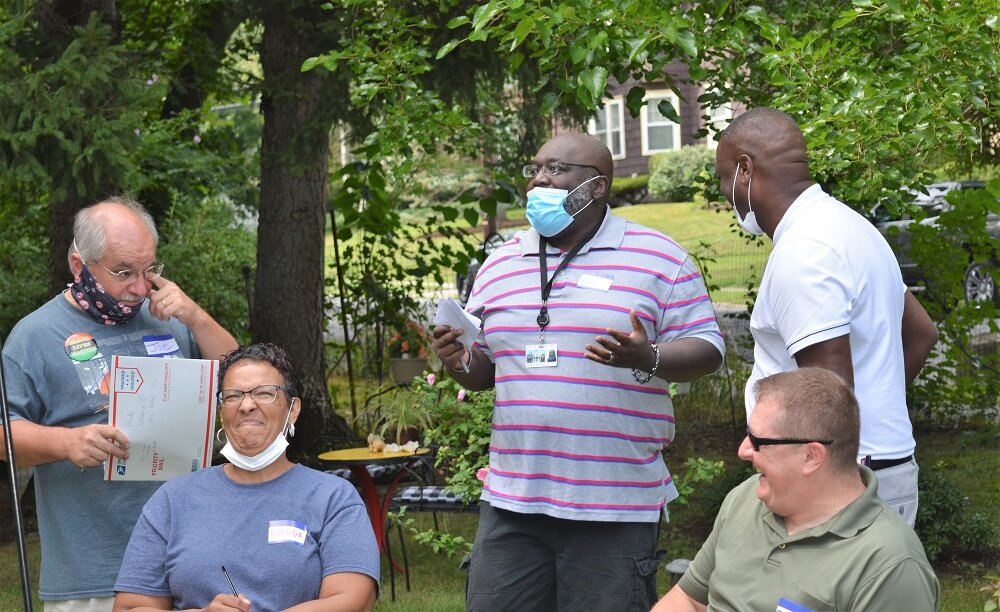
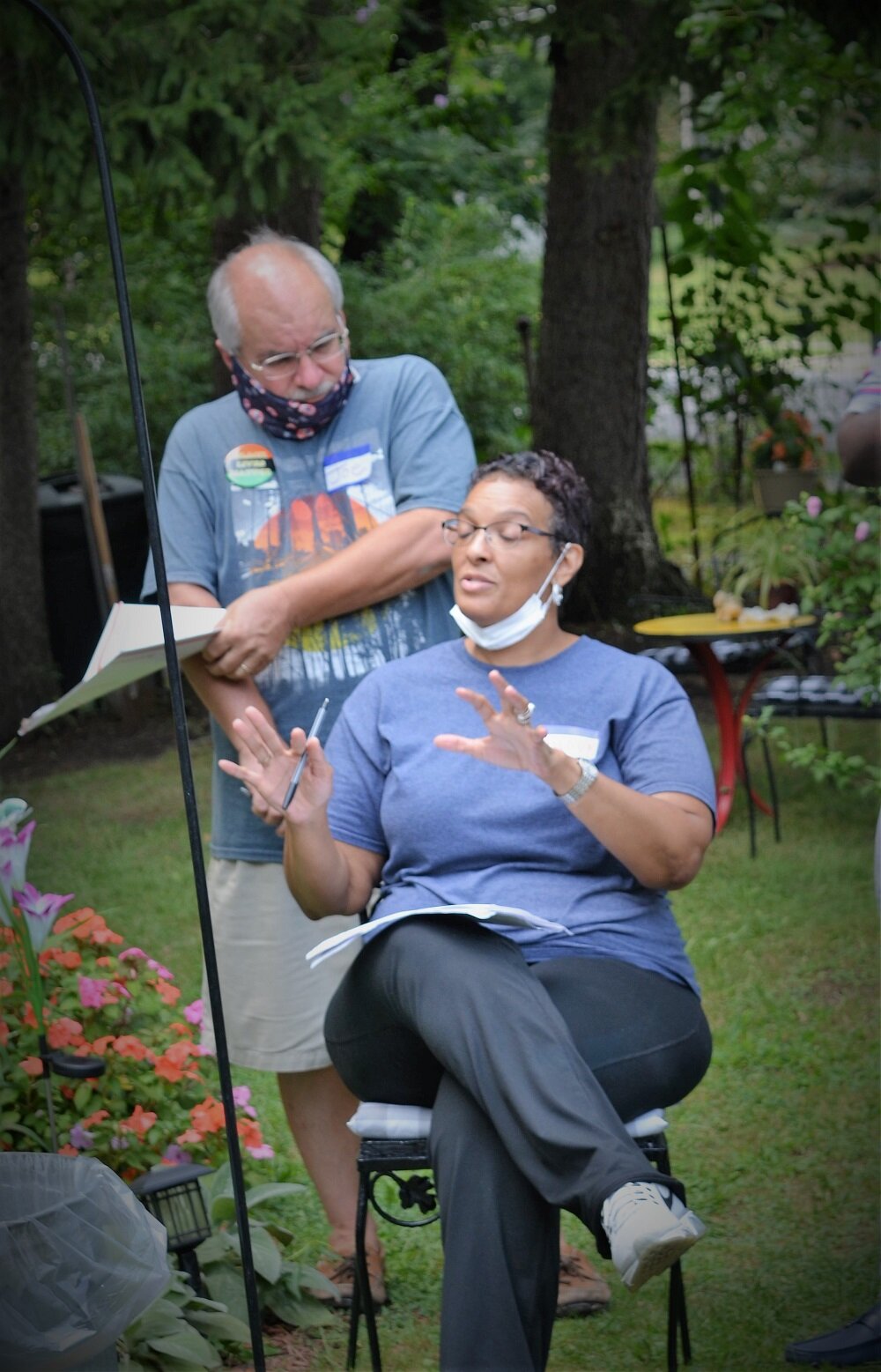

Hosted by the chair of the Harriet Tubman Center for Peace and Justice with members of that organization involved, the leadership of the Auburn/Cayuga branch of the NAACP, Auburns’ Human Rights Commission, Auburn Police Department and the Cayuga County Sheriff’s Office rounded out the participants.
The bottom line take-away or what I routinely refer to as “aftershock” is restively simple and not that complex.
If you are able, with minimal organization and time allotment, identify a small group of neighbors or co-workers who want to move past the artificiality of knowing who our public safety officers are and are ready to get to know them as people. I am confident there will be officers who would welcome (depending on assignment and schedule) to get to know residents as long as there is no discussion of what someone does career-wise so perceptions and long held beliefs are not part of the person to person engagement.
I stand ready to advise such grass root initiatives and share with you what was learned from the first “Getting to Know You” initiative. At its essence, the “Auburn Cayuga Approach” attempts to identify and build a viable and specific platform to be the action plan when community demonstrations, marches, speeches, signs and other efforts to sway public policy start to recede in the public’s mind and folks look to figure out what is next. In a small way, all collaborating partners involved in the social justice milieu will continue to chart a plausible path. The community’s ideas and concerns are welcome.
~ bill berry, jr.
bill berry, jr. is the CEO of aaduna, Inc. and publishes the Auburn-based global literary and visual arts journal called aaduna. He serves as chair of the HTCJP and from his perspective, this essay is a profoundly personal assessment of where he feels social justice in Auburn is headed, evolving and its need for further community engagement.



![[Left to Right] Chief Joe Morabito, Auburn Fire Department, Jack Hardy, Chair, Auburn Civil Service Commission, Deputy Chief, Roger Anthony, Auburn Police Department, and Lieutenant, James Slayton, Auburn Police Department. Photo taken at the “Conne…](https://images.squarespace-cdn.com/content/v1/5e31ab36a185506f51f4aa69/1598741709627-TIFS6PM7NLW1AQVNFHOU/Building+Bridges+BTW+12+3+2019.jpg)







